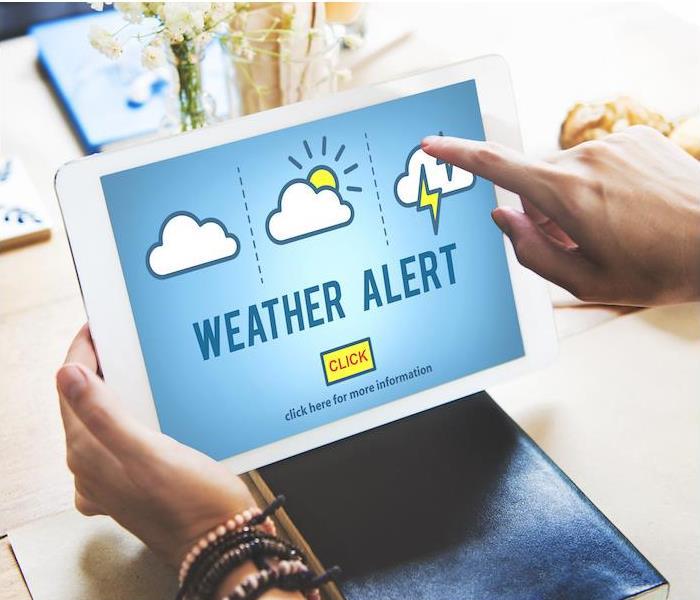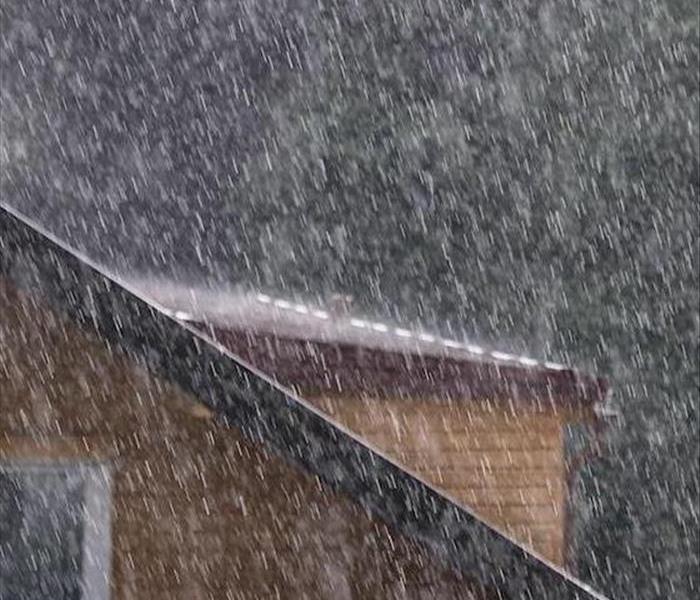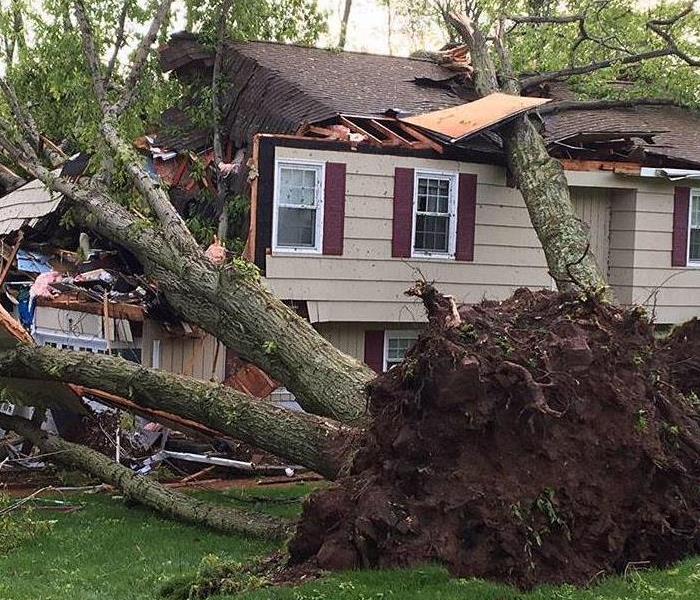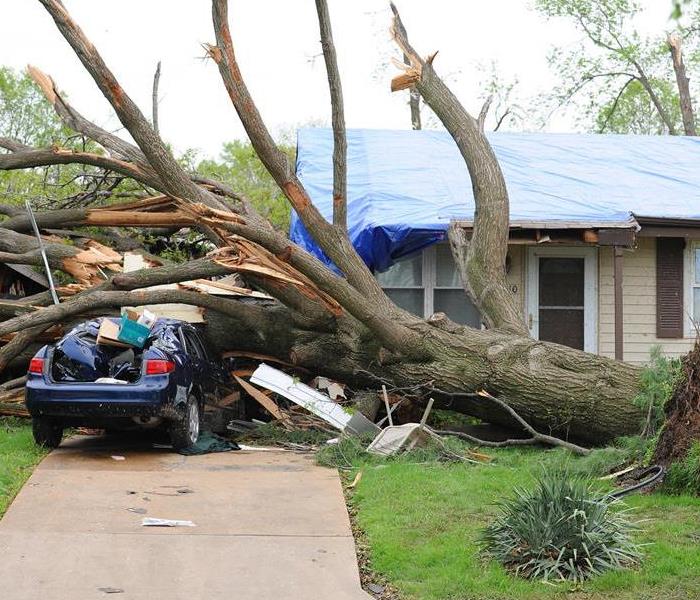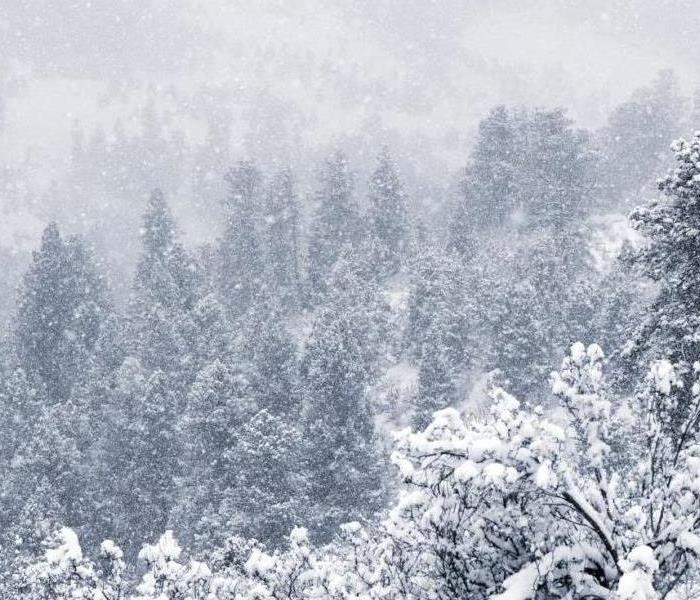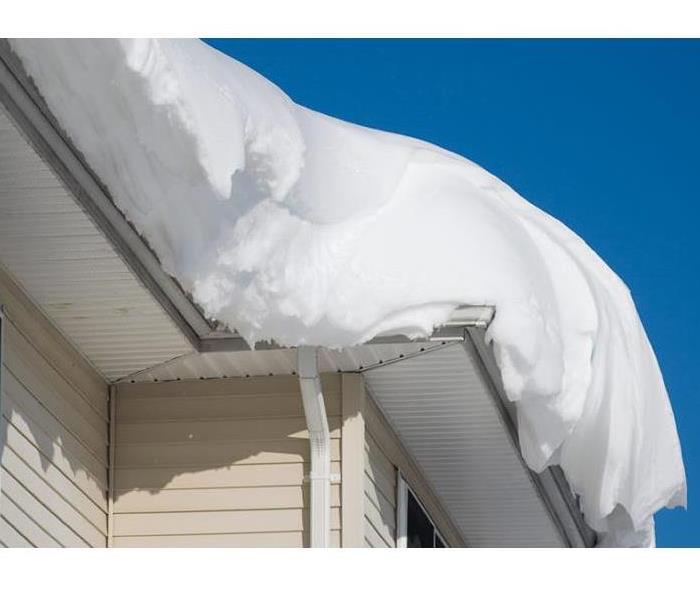Recent Storm Damage Posts
Winter Weather Safety Tips for Homeowners in Reno Southwest | SERVPRO of Reno Southwest
1/8/2025 (Permalink)
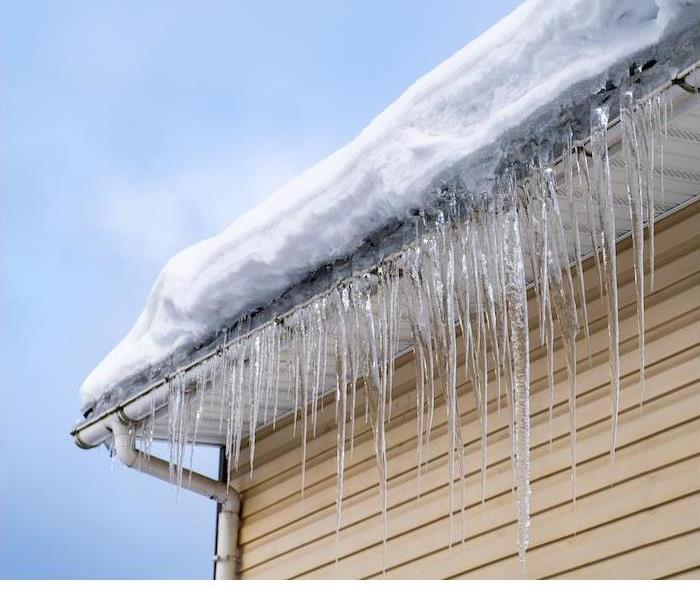 Winter Weather Safety: Protect your Reno-Southwest home with SERVPRO's top winter safety tips!
Winter Weather Safety: Protect your Reno-Southwest home with SERVPRO's top winter safety tips!
While winter in Reno may not be as severe as other parts of the country, it still brings its own set of challenges. The combination of cold temperatures, snow, and occasional storms can affect homes in this region if homeowners aren’t prepared.
SERVPRO of Reno Southwest is here to help guide you through essential winter weather safety tips to protect your property and ensure your family stays safe during the colder months.
Protect Your Pipes from FreezingThough Reno Southwest typically enjoys mild winters, freezing temperatures can still occur, especially during cold snaps. Exposed pipes are particularly vulnerable to freezing, which can cause them to burst and lead to costly water damage. To prevent this, make sure to insulate pipes in unheated areas such as garages, attics, and crawl spaces. You can use foam pipe insulation or heat tape to help keep your pipes warm.
Additionally, allowing faucets to drip slightly during extremely cold nights can help keep the water moving and prevent freezing. If you have outdoor irrigation systems, drain them thoroughly before the season begins. If your pipes do freeze or burst, SERVPRO of Reno Southwest is available to assist with water damage restoration and help restore your home.
Maintain Your Roof and GuttersWinter storms in Reno can bring heavy snow, strong winds, and occasional ice, which can damage your roof. Ice dams, which form when melting snow refreezes along the eaves, can lead to leaks and water damage inside your home. Before the season begins, inspect your roof for any loose or damaged shingles and check the flashing around chimneys, vents, and skylights for gaps. It’s also important to clean out your gutters to ensure proper drainage.
Clogged gutters can cause water to back up on the roof, increasing the risk of ice dams and leaks. If snow accumulates on your roof, be sure to remove it properly to prevent excess weight from damaging the structure. Should your roof suffer any damage from winter storms, SERVPRO of Reno Southwest is here to help with quick repairs and water damage restoration.
Prepare for Winter Power OutagesAlthough power outages are less frequent in Reno, winter storms can still disrupt electrical service. Snow, ice, and high winds can cause downed power lines, leaving your home without heat and electricity. To prepare, ensure your home’s heating system is working properly before the cold weather sets in. It’s also a good idea to have backup heat sources, such as space heaters or a generator, ready to go—just make sure you follow all safety guidelines when using them.
Keep an emergency kit with flashlights, batteries, bottled water, and non-perishable food on hand in case of an extended outage. If your home suffers water damage due to a power loss or storm-related issue, SERVPRO of Reno Southwest is here to respond quickly with expert restoration services.
Be Winter-Ready with SERVPRO of Reno SouthwestWhile winter in Reno Southwest may not be as harsh as other parts of the country, it’s still important to be prepared for the cold, snow, and occasional storms. By protecting your pipes, maintaining your roof, and preparing for power outages, you can help safeguard your home from winter-related damage. If you experience water damage or other issues this winter, SERVPRO of Reno Southwest is here to help.
Contact us today for professional restoration services to ensure your home is safe and secure all season long.
Flood Readiness: Essential Steps for Protecting Your Home | SERVPRO of Reno Southwest
11/21/2024 (Permalink)
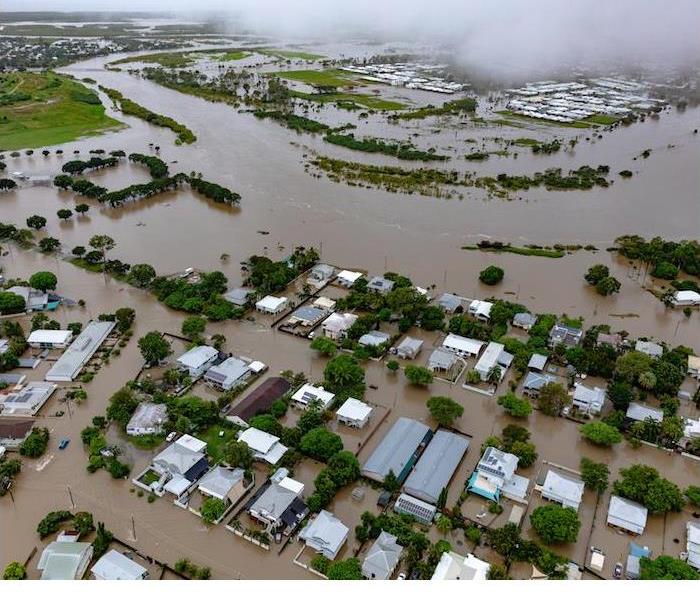 Protect your home from flooding! Discover essential steps to prepare, minimize damage, and keep your family safe. Read more for expert tips today!
Protect your home from flooding! Discover essential steps to prepare, minimize damage, and keep your family safe. Read more for expert tips today!
Flooding can be a significant threat to homeowners, leading to extensive damage if you’re not adequately prepared. While we hope to avoid such disasters, taking proactive steps to safeguard your home and belongings is essential. In this blog, we’ll discuss crucial measures you can take to prepare for a potential flood, ensuring your family and property stay safe amid unpredictable weather.
Assess Your Risk and Stay InformedUnderstanding your risk is the first step in flood preparedness. Flood zones can vary considerably, even within Reno. Consult local flood maps and resources from the Federal Emergency Management Agency (FEMA) to determine if your property is at risk. Familiarize yourself with the region’s weather patterns and stay updated on local alerts.
Sign up for community notifications to receive timely updates about potential flooding. Awareness is key; early warnings allow you to take proactive measures. If your area is prone to flooding, consider investing in flood insurance, as standard homeowners’ policies often don’t cover flood damage. A dedicated flood insurance policy can provide invaluable peace of mind.
Create a Flood Emergency PlanOnce you understand your risk, it’s vital to have an emergency plan in place. Sit down with your family and discuss the steps you would take in the event of a flood. Designate a safe location to evacuate to, whether it’s a friend’s house or a nearby shelter, and ensure everyone knows how to get there. Assemble an emergency kit that includes essential supplies such as water, non-perishable food, flashlights, a first-aid kit, and any necessary medications.
Keep important documents, including insurance policies and identification, in a waterproof container. Regularly practice your emergency plan so that everyone is familiar with it and can act quickly when needed. This preparation not only keeps your family safe but also helps reduce panic during an already stressful situation.
Implement Preventive Measures at HomeIn addition to having a plan, several preventive measures can minimize flood damage to your home. Start by inspecting your property for potential vulnerabilities, such as basement leaks or inadequate drainage systems. Consider installing sump pumps and backflow valves to prevent water from entering your home.
Elevate critical utilities like electrical panels, heating systems, and water heaters above potential flood levels. Landscaping can also play a vital role in flood prevention; create sloping grades away from your home and ensure that gutters and downspouts effectively direct water away from your foundation. If you live in a particularly flood-prone area, investing in flood-resistant materials during renovations can significantly reduce the impact of flooding.
In conclusion, while we can’t predict when a flood might strike, we can certainly prepare for one. By assessing your risk, creating an emergency plan, and implementing preventive measures, you can protect your home and family from the devastating effects of flooding.
If you need assistance with flood preparedness or recovery, don’t hesitate to reach out to SERVPRO of Reno Southwest. We’re here to help® you every step of the way, ensuring you’re ready for whatever challenges may come your way.
What to Do After a Fall Storm: Essential Steps for Home Damage Recovery | SERVPRO of Reno Southwest
9/16/2024 (Permalink)
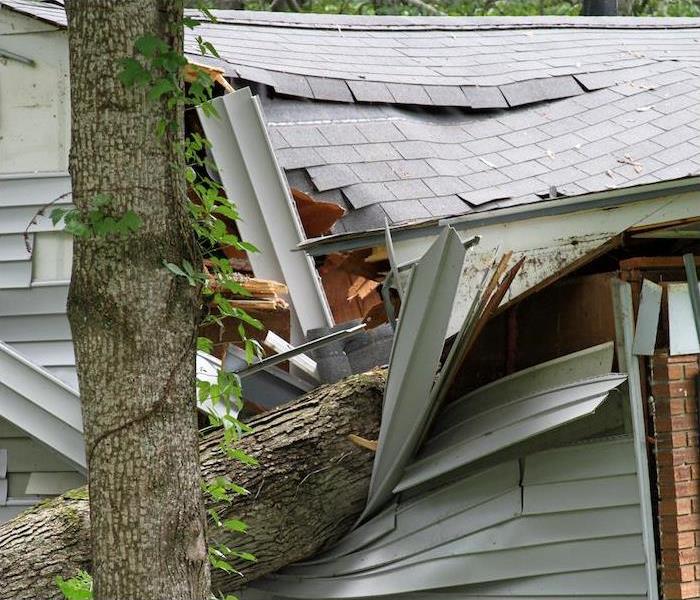 Don't delay! When storm damages affects your property, call SERVPRO of Reno Southwest to restore your space.
Don't delay! When storm damages affects your property, call SERVPRO of Reno Southwest to restore your space.
Fall storms can bring intense weather conditions, leaving behind a trail of damage that can be challenging to handle. From strong winds and heavy rains to flooding and fallen trees, the aftermath of such storms can be overwhelming.
At SERVPRO of Reno Southwest, we understand the stress and confusion that can follow, and we’re here to guide you through the crucial steps you need to take if your home has been affected. Follow these essential actions to ensure a smooth and effective recovery process.
Assess the Damage SafelyThe initial response after a fall storm is to assess the damage to your home, but it’s essential to prioritize safety. Before entering your property, inspect the exterior from a safe distance for any immediate dangers such as downed power lines or compromised structures. Once you determine that it’s safe, use a flashlight instead of candles to avoid fire hazards from potential gas leaks.
Document all visible damage with photos or videos, including issues like roof damage, broken windows, and any signs of water intrusion. If the damage is extensive or you’re unsure about the safety of entering your home, it’s best to contact a professional for a thorough inspection.
Secure and Mitigate Further DamageAfter assessing the damage, the next crucial step is to prevent further problems. If you notice leaks or water infiltration, take immediate action to minimize additional damage. Cover broken windows with plastic sheeting or tarps and address any leaks to prevent water from spreading.
If you’re dealing with standing water, be cautious of potential electrical hazards and avoid using electrical appliances until a professional confirms it’s safe. At SERVPRO of Reno Southwest, our team specializes in water extraction and drying services to help you mitigate further damage and avoid complications such as mold growth.
Contact Insurance and Restoration ProfessionalsOnce you’ve secured your home, it’s time to contact your insurance company to report the damage. Provide them with all necessary documentation, including your photos and videos, and follow their instructions for filing a claim. At the same time, reach out to restoration professionals like SERVPRO of Reno Southwest.
Our experienced team is ready to assist with comprehensive damage restoration, including water removal, structural drying, and repairs. By coordinating with both your insurance provider and our restoration experts, you can streamline the recovery process and ensure that your home is restored to its pre-storm condition.
Recovering from a fall storm can be a challenging experience, but taking these steps will help you manage the process effectively. SERVPRO of Reno Southwest is dedicated to helping you through every stage of the restoration process, from initial damage assessment to final repairs. If your home has been damaged by a fall storm, contact us today for expert assistance and support.
We are Here to Help® you restore your home and bring peace of mind back to your life. Call us now to start your recovery journey.
The Summer Peril: Understanding the Risks of Flooding | SERVPRO of Reno Southwest
7/15/2024 (Permalink)
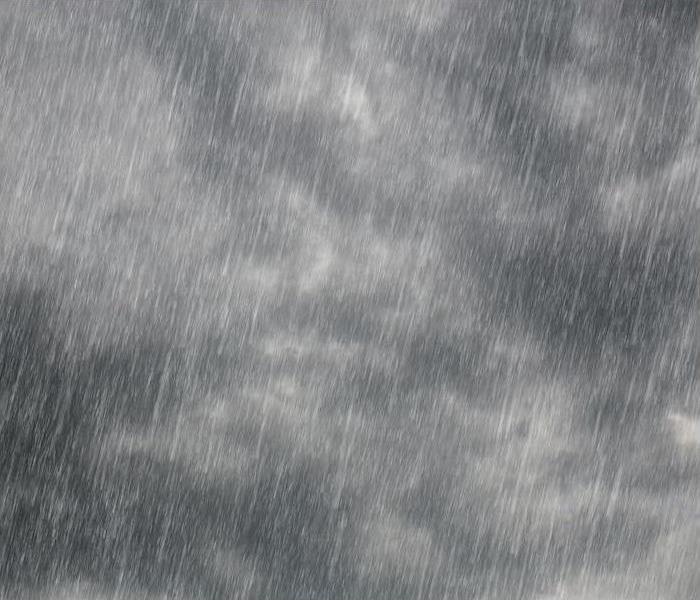 When storms strike, call SERVPRO of Reno Southwest to restore your property to preloss condition faster!
When storms strike, call SERVPRO of Reno Southwest to restore your property to preloss condition faster!
Summer in Reno brings warm days and outdoor activities but also carries the potential for flooding, especially along the Truckee River. As temperatures rise and thunderstorms become more frequent, the region faces increased risks of flash floods and river overflow.
Understanding these hazards is crucial for residents and businesses to prepare and mitigate potential damage.
The Threat of Flash FloodsDuring summer, intense thunderstorms can develop rapidly over the Sierra Nevada mountains, bringing heavy rainfall to the Reno area. The hard, dry ground characteristic of the high desert landscape often struggles to absorb sudden downpours, resulting in rapid runoff.
This runoff can overwhelm drainage systems, leading to flash floods in low-lying areas and urban environments. Along with swift currents, flash floods can carry debris, endangering lives and causing significant damage to homes and businesses along the Truckee River and its tributaries.
The Impact on the Truckee RiverThe Truckee River, flowing through the heart of Reno, is a vital waterway that provides recreation and sustenance for the community. However, during summer storms, the river can swell quickly, posing risks of both riverine flooding and flash flooding in nearby neighborhoods.
Properties along the riverbank are particularly vulnerable to inundation, risking structural damage and loss of possession. Businesses and infrastructure along the river corridor also face potential disruptions, impacting local commerce and daily operations.
Mitigating Risks Through PreparednessPreparation is key to minimizing the impact of summer flooding:
- Stay Informed: Monitor weather forecasts and warnings issued by local authorities and the National Weather Service.
- Protect Your Property: Clear gutters and drains regularly, elevate electrical systems and valuables, and consider installing flood barriers or sump pumps where applicable.
- Community Readiness: Familiarize yourself with evacuation routes and emergency shelters in case evacuation becomes necessary.
Strengthening Resilience Against Summer FloodingAs summer progresses and the risk of flooding in Reno heightens, understanding the threats posed by flash floods and riverine flooding is essential. By staying informed, preparing homes and businesses, and having a comprehensive emergency plan in place, residents can mitigate risks and facilitate a quicker recovery process in the event of a flood.
Contact SERVPRO of Reno Southwest for expert flood damage restoration services. We are ready to help 24⁄7.
Be Storm-Ready: Essential Tips for Preparing Your Home for Summer Storms | SERVPRO of Reno Southwest
7/2/2024 (Permalink)
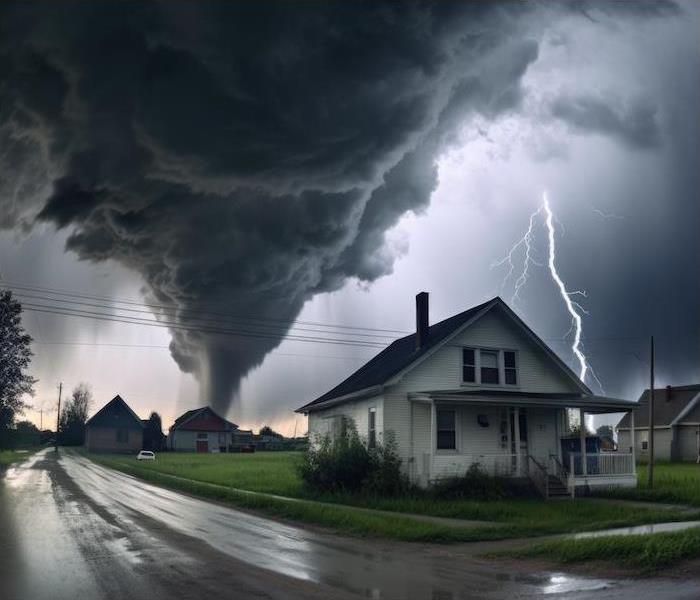 SERVPRO of Reno Southwest is Here to Help® after intense summer storms affect your home or business.
SERVPRO of Reno Southwest is Here to Help® after intense summer storms affect your home or business.
As the temperatures rise and the days grow longer, summer storms become an inevitable part of the season. While these storms can bring much-needed rain and relief from the heat, they also pose potential risks to your home and property.
Taking proactive steps to prepare for summer storms can help minimize damage and ensure your safety. Here are some essential tips to get your home storm-ready:
Assess Your PropertyBefore the storm season kicks into full gear, take the time to assess your property for any vulnerabilities. Look for loose shingles, damaged siding, or overhanging branches that could pose a threat during high winds. Addressing these issues beforehand can help prevent them from becoming more significant problems during a storm.
Prepare an Emergency Kit
A well-stocked emergency kit is essential for weathering summer storms and potential power outages. Your kit should include basic necessities such as non-perishable food, water, flashlights, batteries, a first aid kit, and any essential medications. Keep your emergency kit in a designated location that is easily accessible to all family members.
Secure Outdoor Items
During a summer storm, outdoor furniture, toys, and other loose items can become projectiles, causing damage to your home or neighboring properties. Secure or bring indoors any outdoor items that could be picked up by strong winds. Additionally, trim back trees and shrubs to reduce the risk of branches breaking off and causing damage.
SERVPRO®’s AssistanceWhile you can take many steps to prepare your home for summer storms, sometimes damage is unavoidable. In the event of storm-related damage to your home, SERVPRO of Reno Southwest is here to help. Our team of professionals specializes in storm damage restoration and can quickly and efficiently restore your home to its pre-storm condition. Contact us today to learn more about our services and how we can assist you in your time of need.
Summer storms are a natural part of the season, but with proper preparation, you can minimize their impact on your home and property. By assessing your property, preparing an emergency kit, and securing outdoor items, you can help protect your home and family from the potential dangers of summer storms.
If storm damage does occur, SERVPRO of Reno Southwest is here to help you get back on your feet.
Understanding the Dual Threat of Severe Thunderstorms and Flash Floods | SERVPRO of Reno Southwest
6/17/2024 (Permalink)
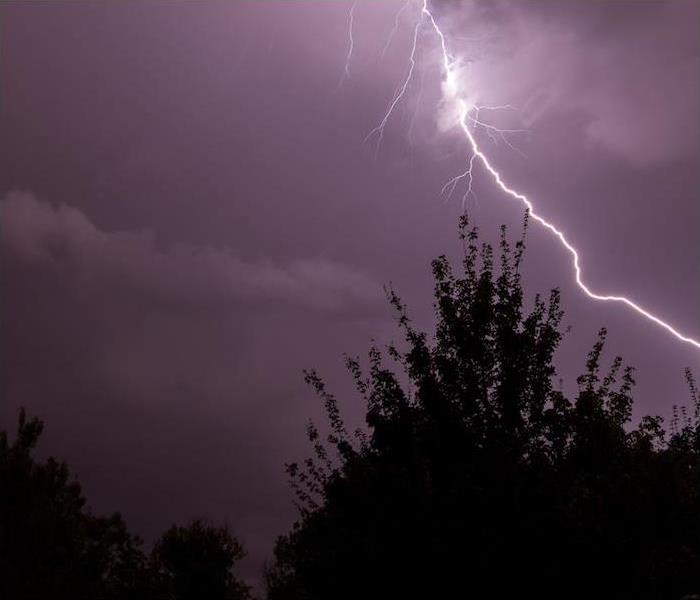 Whether its storm damage cleanup or restoration, SERVPRO of Reno Southwest is ready to respond in a moments notice to your call.
Whether its storm damage cleanup or restoration, SERVPRO of Reno Southwest is ready to respond in a moments notice to your call.
Living in Reno means being prepared for the dual threat of severe thunderstorms and flash floods, especially during the summer months. These weather events can bring heavy rainfall, strong winds, lightning, and rapid flooding, posing significant risks to both property and personal safety. Understanding the potential dangers associated with severe weather is crucial for homeowners to adequately prepare and protect their homes.
Severe thunderstorms can produce intense rainfall in a short period, leading to flash flooding in low-lying areas and areas with poor drainage. Flash floods are particularly dangerous because they can occur with little warning, leaving little time for evacuation or preparation.
Additionally, severe thunderstorms may also bring high winds capable of causing structural damage and power outages. Being aware of these risks and taking proactive measures can help homeowners mitigate potential damage and keep their families safe during severe weather events.
Preparing Your Home for Severe WeatherPreparing your home for severe thunderstorms and flash floods involves several key steps to minimize damage and ensure the safety of your family. Start by inspecting your property for any vulnerabilities, such as loose roof shingles, damaged trees, or clogged gutters. Secure outdoor items like patio furniture, grills, and lawn decorations to prevent them from becoming projectiles in high winds.
It’s also important to reinforce doors and windows to withstand strong winds and flying debris. Consider installing storm shutters or boarding up windows with plywood to provide added protection during severe weather. Inside your home, designate a safe area such as a basement or interior room on the lowest level to seek shelter during a storm. Ensure that your family knows where to go and what to do in the event of severe weather.
Staying Safe During Severe Weather EventsDuring severe thunderstorms and flash floods, it’s essential to stay informed and prepared to respond quickly to changing conditions. Monitor weather alerts from trusted sources and have a plan in place for how to react in the event of severe weather. Avoid using electrical appliances and plumbing fixtures during a storm to reduce the risk of electrical fires and flooding.
If you live in an area prone to flash flooding, consider purchasing flood insurance to protect your home and belongings. Keep important documents, valuables, and emergency supplies in a waterproof container or safe place, and have an evacuation plan in case flooding occurs. After the storm passes, be cautious of downed power lines, flooded areas, and other hazards when assessing damage and beginning cleanup efforts.
Trust Us for Storm Damage RestorationDon’t wait until it’s too late to prepare for severe weather. Contact SERVPRO of Reno Southwest today to learn more about our storm damage restoration services and how we can help you recover quickly and safely after a storm or flood.
From water extraction and structural drying to debris cleanup and mold remediation, our team has the expertise and resources to handle any size disaster.
Stay safe and prepared this storm season with SERVPRO of Reno Southwest by your side.
Kids in the House? Tips for Storm Planning for a Family | SERVPRO of Reno Southwest
5/15/2024 (Permalink)
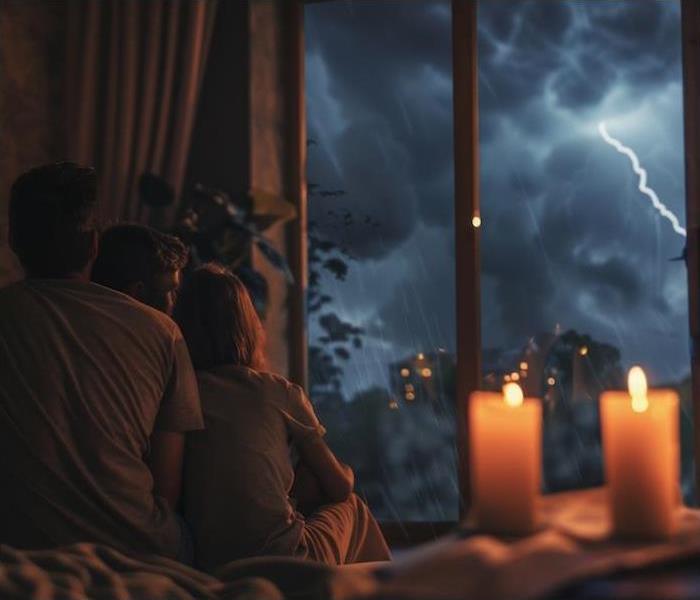 When the storm has passed, call SERVPRO of Reno Southwest to help you recover.
When the storm has passed, call SERVPRO of Reno Southwest to help you recover.
Thunder is roaring, lightning is striking and tornado sirens are blaring. Your dog is pacing, kids are panicking and you’re unsure where to begin. Storms can be terrifying, especially as we head into the hot and humid summer season.
While we can’t control the weather, we can prepare and react to it to keep everyone calm, especially the kids. Explore simple ways our team suggests to integrate storm planning into your family’s routine, ensuring everyone stays calm during emergencies.
Watching the SkyWe can all tell the difference between cloudy and sunny days, but not everyone knows what signs to watch for when clouds change. Even without storm forecasts, it’s crucial to monitor the sky. Teach your kids the signs of an approaching dangerous storm—rotating clouds, a dark or green sky, thunder and lightning mean they should head indoors immediately.
They should also recognize the sound of a tornado siren and when it might go off. Getting them familiar with the siren during tests can help, as it’s not an emergency and they can get used to it from different areas of your home. Let them practice listening for the siren, and have a game to see who can get to your safe shelter location faster.
Preparing TogetherHave you put together your storm emergency plan yet? This can include deciding how to access your sheltering location quickly and making sure your emergency kit is packed and ready to use whenever.
The best sheltering location will be in the innermost part of your home, preferably on the lowest level and in a room without windows. Keep your gathering area clear and have your kids get used to the space by building a fort under a sturdy table or desk for added protection.
Your kids can also help you pack your emergency kit. Make sure to add the essentials and then let your kids pack their favorite snacks and water bottles.
To make it even a little more fun, have your children choose their very own flashlights and put their names on them! Don’t forget extra batteries, candles, matches or anything else that your family needs to stay comfortable.
Also, don’t forget to pack the entertainment. You might think games and activities are unnecessary during severe weather, but you and your kids will be grateful for the added distraction.
Encouraging a Calm EnvironmentSevere weather can be scary for anyone, let alone children, so reassure them that it is so it’s natural for them to feel anxious about storms. However, it is important to remind your kids that suffering serious storm damage is actually relatively rare. Most storm damage comes in the form of minor roof and siding damage.
By keeping your kids calm and distracted during severe weather, you can help everyone make it through the emergency situation with more confidence.
Storm damage should always be addressed quickly. Contact SERVPRO® day or night for the restoration services you need.
Preventing Flood Damage by Preparing | SERVPRO of Reno Southwest
4/1/2024 (Permalink)
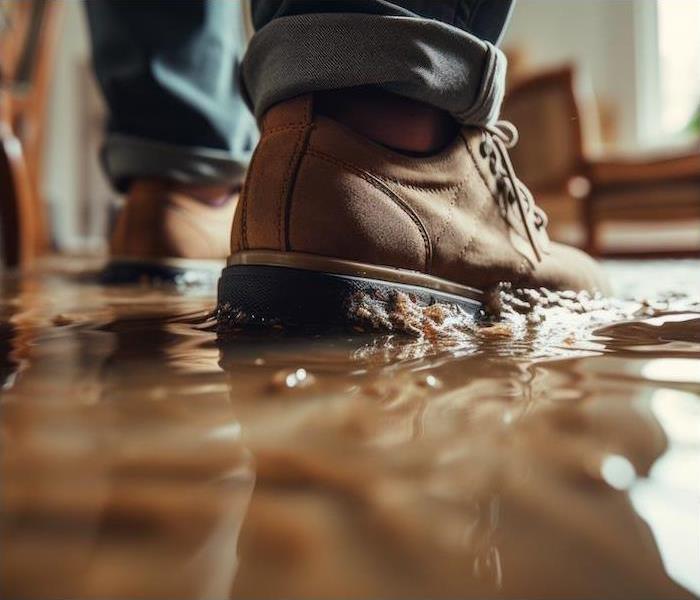 SERVPRO of Reno Southwest is ready to help in a moments notice after spring showers leak in to your home or business.
SERVPRO of Reno Southwest is ready to help in a moments notice after spring showers leak in to your home or business.
Sometimes it is necessary to take life back to the basics, especially when you need to get a task done right the first time. Teaching your child a new math problem, fixing a faulty appliance or tackling an issue at work can all be easier if you go back to the beginning and start with what you know.
The same holds true for home disasters and planning for severe weather. While we may have all the latest apps and gadgets in our homes, the basic tasks that you should be doing every season have a major impact on how your home is affected during a serious flood or water emergency.
Floods are one of the most common reasons for home damage, which is why it is crucial to prepare for severe weather ahead of time.
Knowing Our Flood ZonesWe often associate floods with Mother Nature, but that is not always the reason you wind up with water in your basement. Busted pipes, leaking appliances or other manmade disasters can be just as destructive as heavy rain.
Thankfully, manmade situations are often easier to recover from because they can be controlled in a more reliable manner. Floods that come from heavy rain or roof leaks are usually more destructive because we all know that we can’t control the weather!
We are thankful to live so close to the Truckee River, but its close proximity is what increases the risk of flooding for the homes, businesses and properties around it. Understanding your personal flooding risk can help you prepare for and prevent flooding situations from overwhelming your home.
Even if your property is not necessarily in a designated flood zone, it is crucial that you understand what happens to your yard when it rains. If you live in a low-lying area or have low spots around your property, taking preventive measures around your home can help immensely. Simple things like adding extra length to your downspouts can help move water farther away from your home, and adding a rain garden can help encourage water to move into a more productive part of your yard.
If your property has heavy tree coverage, investing in gutter covers can help keep yard debris out of your gutter system. You should also be getting up onto your roof after every storm to check for damage or missing shingles. Every basic task you do could end up having a profoundly positive impact on your home to prevent flooding emergencies.
Preparing to PreventKnowing about your flood risk is one thing, but taking action to prevent floods is crucial. Taking permanent steps to protect your home can help you stay dry no matter what conditions come our way.
Consider having your property evaluated for drainage and having it professionally graded to help keep the water away from your foundation. If you have a part of your yard that slopes toward your house, you can also add absorbing landscaping materials like mulch around your foundation to soak up any excess water.
Inside your home, check your windows and doors seasonally for any signs of wear and tear. Resealing windows or leaky door jambs can help your home stay moisture free. If you have a sump pump, be sure it is inspected regularly so you can rest easy knowing that it will work when you need it most.
Good things happen when you take life back to the basics. Incorporate these tasks into your spring weather preparations, but remember to call us if you do wind up suffering from any sort of home damage when the rain comes pouring in.
Do you have water damage in your home? Contact us at SERVPRO® for fast recovery.
Preparing for Weather by Setting Up Alerts | SERVPRO of Reno Southwest
3/1/2024 (Permalink)
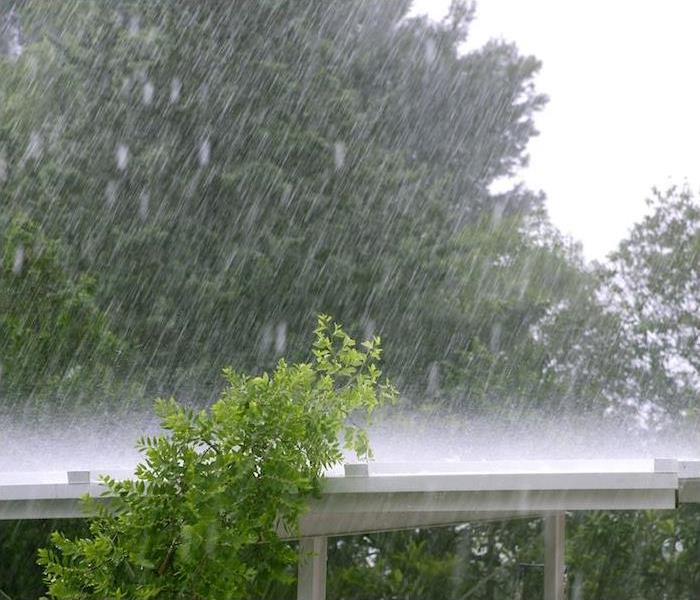 Let SERVPRO of Reno Southwest help you get from April showers to May flowers.
Let SERVPRO of Reno Southwest help you get from April showers to May flowers.
The spring season is well on its way, which means we can finally look forward to warmer and sunnier days ahead! With the rise in temperature, however, we all have to be on the lookout for thunderstorms and the occasional severe weather system that comes through town.
If a storm system pops up unexpectedly, would you be alerted with enough time to prepare and head for shelter? Take the time now to update your weather alert systems and incorporate the helpful severe weather tips below.
Connecting With the InternetDo you have your phone in your hand right now? Or is it right next to your computer? We all spend so much of our time on our electronics these days that it’s no wonder that the majority of our alert systems work via the internet. Wireless Emergency Alerts is an alert system that is already set up in your phone that can automatically be issued if a weather emergency is in the area. Just be sure that your notifications are turned on! In addition, you can download a weather app or two that you can receive alerts and watch forecasts closely.
However, if you choose to go the app route, make sure you are doing your research. There are all kinds of different apps on the market, and they are not all created equally. Look for the ones that are backed by national organizations or that were created by locally trusted sources. You should also sign up for CodeRED, which is a hyperlocal alert system for our county.
News stations and other local weather channels are also great resources during time-sensitive events. Turn on your TV and tune in when a storm is on the horizon so you can stay connected and watch the system move across the area in real-time.
Other Resources to UtilizeIt is important to stay connected no matter your situation, which is why you should have at least one alert system that doesn’t require power in order to work. Your phone, laptop and TV are only good until we lose power or lose a charge, so have a backup alert system for any situation.
Take the time to locate our local weather sirens and find the one nearest to you, noting whether or not it is easy to hear the warning sounds from specific rooms in your home.
In addition, you should consider investing in an NOAA weather radio. Weather radios can come in handy when the power goes out because many of them can be hank crank-operated or solar-powered, which means you can stay connected no matter what!
Are you prepared for what could be coming our way this season? Update your alert systems and make sure you are ready for anything, but keep in mind that we are here to help if your home suffers any sort of home damage this spring.
Serious storms can cause serious property damage. Call SERVPRO® 24⁄7 for immediate restoration assistance.
Understanding the Threat of Home Damage in the Reno Area | SERVPRO of Reno Southwest
11/17/2023 (Permalink)
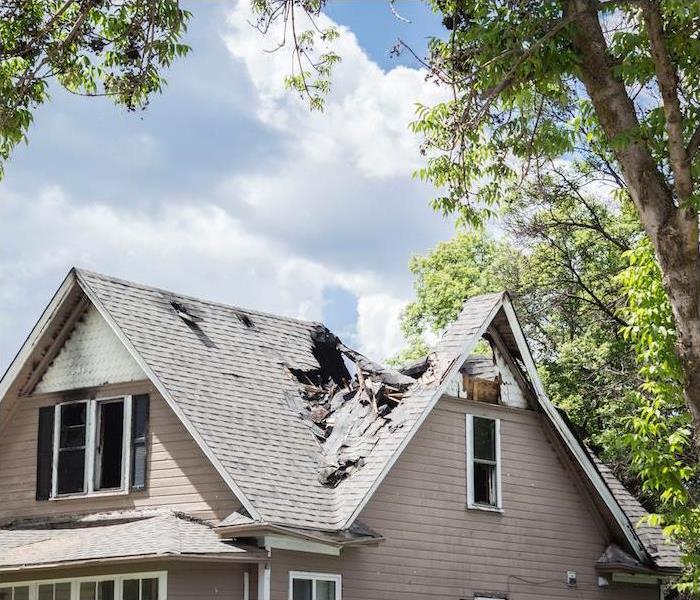 If you discover damage in your residence, call SERVPRO of Reno Southwest right away.
If you discover damage in your residence, call SERVPRO of Reno Southwest right away.
Our homes are constantly battling the elements and are being exposed to threats on a daily basis. Strong weather, potential fires, structural aging and even unexpected home accidents like a broken window can leave you with frustrating damage and yet another phone call to your insurance company.
While it may seem overwhelming to think about what could happen, we can’t live that way! Natural disasters and accidents can’t always be predicted, but understanding how they occur can help you stay better prepared.
SERVPRO® of Reno Southwest is here to help make sure you recover faster and more efficiently. Read on to learn more about the risks in our area.
The Biggest Risks to the Reno AreaWe experience all four seasons here, but we see more sunny days here than we do cloudy or rainy ones. Because of that, a single heavy rainstorm can bring significant flooding issues to our community, especially to the residents that live near the Truckee River.
In addition to flooding concerns, general damage from water issues, house fires or accidents can also occur in the blink of an eye.
Water damage can occur from natural or manmade sources. Floods and heavy rain can leave your property soaked, or a faulty dishwasher could lead to a growing puddle of water all over your brand-new hardwood floors. The same is true for fire, but fire situations are most often started by some type of human error.
The Impact of Compounding DamagesAs if it wasn’t frustrating enough to deal with one threat at your home, a singular disaster can lead to compounded damage. For example, a flooded basement will leave your rooms and carpet wet, but lingering moisture can eventually spark mold growth that leads to structural damage to your foundation.
Fire also has the ability to cause further issues. Smoke and soot can spread to other rooms or levels of your house that never were affected by the flames, and water damage can be present wherever the firefighting efforts took place.
Natural or manmade disasters can be equally destructive, so recovering quickly is usually everyone’s top priority. Contact SERVPRO for a fast recovery no matter what happens at your house.
We will get right to work drying out your water-damaged home by extracting the lingering moisture from your walls, floors and ceiling and then we will get started on your repairs. This may include things like mold mitigation, deep-cleanings or remodels of the affected area.
We are also here to help you overcome fire damage. Our team will remove burned debris, secure your home and work on removing soot and smoke damage from every part of your home. If a section of your home was damaged beyond repair, we will tear it down and build it back to exactly how you want it.
Working with our talented team ensures that you don’t have to hunt around for different contractors to get the job done. We can handle every aspect of your restoration so that your recovery process is smooth and simple.
Does your home need restoration and you don’t want to make more than one call? Contact us to get everything handled by one team.
Preparing for the Snowfall and Storms | SERVPRO of Reno Southwest
11/17/2023 (Permalink)
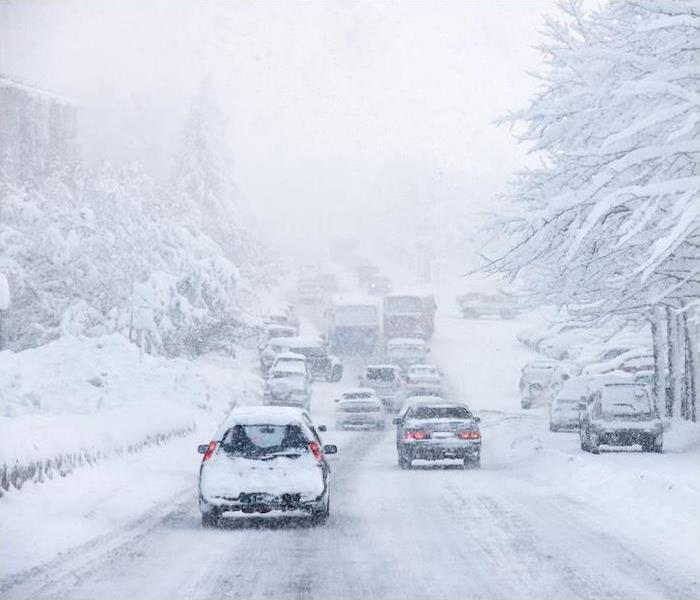 The winter season is almost upon us! SERVPRO of Reno Southwest has your back with these helpful tips.
The winter season is almost upon us! SERVPRO of Reno Southwest has your back with these helpful tips.
While we may not see too much precipitation throughout the year, we do see our share of snow in the Reno area. The winter season can bring serious wind, rain and snow as well as temperatures that are bone-chilling.
Storm systems at this time of year can be unpredictable, so preparing for the different storm scenarios can help you avoid serious damage to your property when strong storms do come to town.
Preparing Your House for the ColdSince we often toe the line of freezing in the early stages of winter, driving when the conditions are less than ideal can always be a little precarious. Rain and sleet can easily freeze to the roads and make them slick, so stay home when there is weather in the forecast.
Pack up your emergency kit so you can stay safe and warm while the storm passes through the Reno area. Strong wind and snowy conditions can cause power outages for a few hours or even a few days, so having your emergency kit ready ahead of time is crucial.
Locate your flashlights and backup batteries, your first-aid kit, safe drinking water and extra cozy blankets. You should also have a reliable way to stay warm, like a fireplace that is clean and ready to use.
While we always recommend staying put during a storm, there may come a time when your home becomes too cold to stay in. Have a backup location in mind that you can head to like a friend’s house, the library or a warming center.
Cleaning Up AfterwardOnce the storm has blown on, now is the time to evaluate your home for damage. Use extreme caution when walking around your property as it could be icy and snowy.
If any significant snow has fallen, use a roof rake, broom or shovel to pull it off the edge of your roof. Over time, heavy snow can build up and cause structural damage to your roof or gutter system.
If the storm brought a lot of strong wind through the area, any precipitation that fell could have been blown into the side of your home and into your vents. The freezing temperatures can easily freeze that rain or sleet into ice that blocks your vents from working properly. Clear away any snow or ice right away to keep your family safe.
Where We Come Into PlayDepending on the severity of the storm, you could be dealing with some serious structural damage. Ice dams, roof cave-ins and burst pipes could be really troublesome. Our team will handle your entire restoration so you don’t have to worry about a thing.
We will clean, sanitize and repair anything that was damaged quickly so you can get back to the business of enjoying the winter season in the Reno community.
Our team is always ready for anything! Contact us at SERVPRO® of Reno Southwest for a quick restoration after suffering damage from a winter storm.
Taking Care of Your Property After a Storm | SERVPRO of Reno Southwest
9/18/2023 (Permalink)
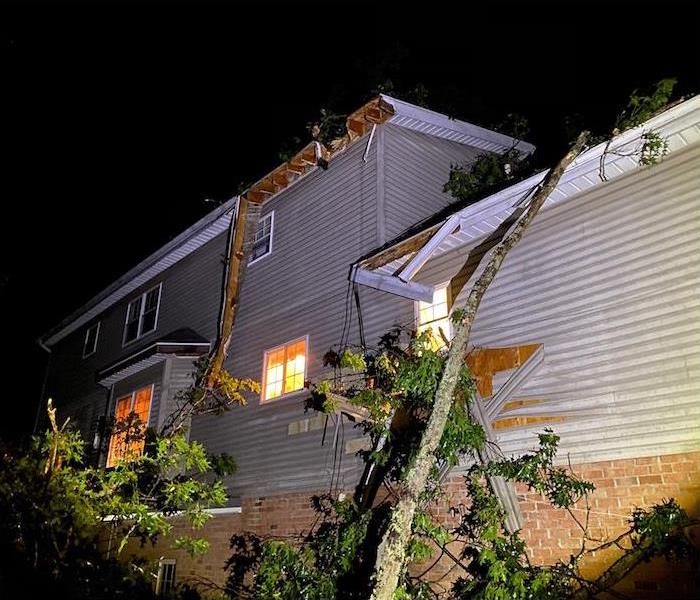 Summer storms affecting your property? Call SERVPRO of Reno Southwest to restore your space in no time!
Summer storms affecting your property? Call SERVPRO of Reno Southwest to restore your space in no time!
Storms have the ability to appear quickly in the Reno area, whether it’s a quiet storm with some light rain or a severe weather situation that has us all running for our homes. In these cases, we can be surprised by storm damage that we certainly were not expecting.
We don’t often see tornadoes around here in the Reno area, but we are no strangers to strong wind, rain and the occasional hailstorm. Knowing what conditions are expected with each storm can help you better prepare as soon as the warning is issued.
Taking steps to prevent damage is always helpful, but oftentimes that is just not possible if the storm arrives fast and furious. Safety should always be your top priority, so getting inside and staying there should be your main goal.
If you discover storm damage after the storm has passed, what do you do? You call SERVPRO® of Reno Southwest, of course. Check out our tips for post-storm recovery below.
Steps Following a Severe StormSo the thunder is getting quieter and the rain has slowed to a trickle. Is the coast clear to go outside? Be extremely cautious heading outside or going anywhere after a storm, as a storm can come in waves and the next thundercloud may be on the horizon. Keep an eye on the sky as you move about, and keep your weather radio handy.
You should also take this time to contact your loved ones. Check on anyone that wasn’t home when the storm hit, and call or text anyone that lives alone.
You should also take the time to check on your neighbors. Storms can impact homes differently, and while you may be dealing with only minor damage, your neighbors might be in a worse situation.
Once everyone has been deemed safe and you determine that no one needs emergency services, head home and start taking pictures of any damages you see. This is also the time to call SERVPRO of Reno Southwest.
How Our Restoration Team Can HelpThe longer you wait to address any issues, the worse the damage can become. Just use extreme caution when walking around your home as hazards could be lurking just out of sight like loose nails or shattered glass.
Do whatever you can to prevent further damage while you wait for us to show up. That might include laying tarps over your belongings or boarding up a window that was broken. We will handle this process more extensively when we arrive, but stopping the flow of water can help save your possessions from more damage in the meantime.
We stay in close contact with your insurance company while we work, so you can rest assured that we will take care of your home and make sure you are taken care of as well.
We know that suffering storm damage can be frustrating and often overwhelming, but we will work hard to help you overcome it as quickly as possible. We are always here for you!
If a storm leaves your home damaged, contact us for fast recovery. We’re here 24⁄7 when you need us.
Preparing Your Home for Seasonal Summer Storms | SERVPRO of Reno Southwest
7/19/2023 (Permalink)
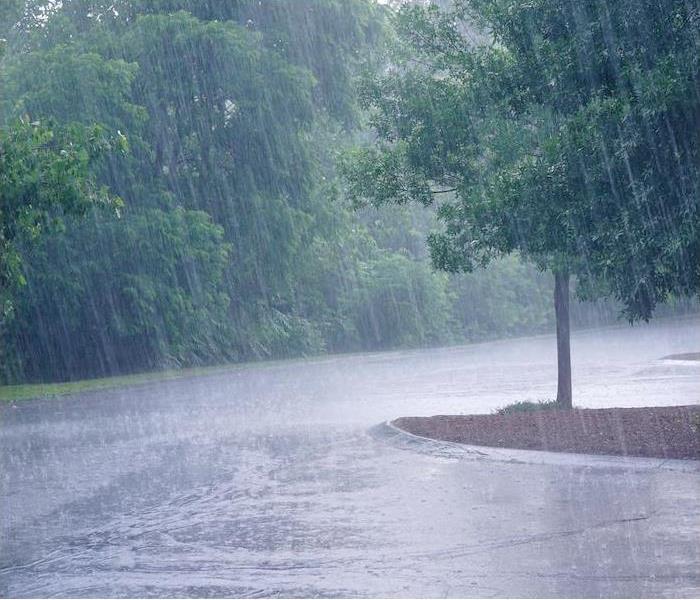 Have you been impacted by the unusual summer storm season? SERVPRO of Reno Southwest has your back when you experience flood and water damage.
Have you been impacted by the unusual summer storm season? SERVPRO of Reno Southwest has your back when you experience flood and water damage.
Wind, rain, floods and thunderstorms are all part of the summer weather experience. While many weather conditions remain mild and are actually welcome during the dry season, storms can become severe at any point.
Our homes are great at keeping us safe and dry on a regular basis, but it is important to prepare your home ahead of severe weather to prevent as much damage as possible when storms do roll into town.
In the summer, we are more prone to pop-up rainstorms and severe thunderstorms with high wind, so taking preventive steps against these threats can help you avoid significant damage.
While it is important to create and use a safe shelter location inside your home, preparing your property and your home’s exterior is a great place to start.
Routine Maintenance TasksProtecting your home from the threat of severe weather doesn’t have to be costly or complicated. While you are busy taking care of your property and your home, you are actually preparing it for the summer weather!
No matter what kind of home you live in, strong winds have the potential to damage your roof, siding and windows. Try to keep your trees trimmed and remove dead branches or limbs from your trees and lawn regularly. Blocked gutters are also a hazard when the rain starts to fall, so keep them free of leaves and other debris.
Whenever you are outside mowing or doing some general yard maintenance, check around your windows and doors for gaps or rotten wood. You should also inspect your roof after every strong storm to look for missing or broken shingles. All of this should be repaired right away to avoid significant water damage later.
Home Investments to MakeMany home preparations can be done without costing you a dime, but there are some really handy things on the market that can help you protect your home even further.
It tends to get really windy around here when storms roll through the Reno area, so investing in storm shutters is an easy way to protect your windows from breaking. Gutter guards can also be a good investment. As the rain falls and leaves and other debris are whipped around, the guards will keep that debris from clogging up your gutters.
If you have a detached garage or outbuilding, you can add reinforcements to the bracing of your structure and you can even install gutters on these buildings to help keep everything nice and dry inside.
Once this is all completed, keep an eye on the weather forecast and take cover when a storm warning is issued. As always, SERVPRO of Reno Southwest is here to help you recover from any damages you suffer.
Was your home damaged in a storm? Call us at SERVPRO of Reno Southwest to start restoration, 24⁄7.
Weather Emergencies and Your Workplace | SERVPRO of Reno Southwest
7/14/2023 (Permalink)
 If your home or business was damaged in a storm, call SERVPRO of Reno Southwest to get you back in action.
If your home or business was damaged in a storm, call SERVPRO of Reno Southwest to get you back in action.
Experiencing a weather emergency or severe storm at home is relatively predictable. You know where everything is, you can easily access the food and water that you need and you are in our own comfortable space. But what about at your business?
We all know that weather is unpredictable in the Reno area, so you could easily be surprised by a storm after you and your staff arrive at work. If your team isn’t prepared to take action, a chaotic situation could ensue, and it could be dangerous for your employees.
By preparing them with the information they need, you are ensuring that everyone under your employment stays safe during a weather emergency.
Preparing for the Different RisksUnderstanding the different weather risks that could affect us can help you prepare more efficiently. Winter storms, extreme heat and high winds are some of the major threats to the Reno community.
While flooding conditions don’t happen often around here, they can still occur at any point. Understanding your flood risk is an easy way to prepare for this possibility. Before you start your workweek, take a look at the forecast so you can plan for the week ahead.
Communication StrategiesAnother important preparation factor is your communication plan. It is easier than ever to share and spread information amongst your employees, thanks to cell phones and the internet. In order to communicate effectively, you need to have everyone’s contact information!
Creating group chats or mass email chains can help you quickly send out information in an emergency. If you need to explain where your evacuation routes are, how to get to your safe shelter location or where your emergency kit is, all you would need to do is send off a quick message.
Plan Your Escape Route or Your Shelter LocationIf you would need your team to evacuate quickly for any reason, they need to know how to get out safely and in a timely manner. Take the time now to show them the evacuation routes and where all of the emergency exits are located.
If staying put is the best course of action, your safe shelter location should be ready to use at a moment’s notice. Prep this space now by clearing it out, stocking it with food and water, and ensuring it is easy to access.
Once you have your plans in place, have your team practice your response for each situation. Practicing helps your team become familiar with each plan so they will react accordingly during a true weather emergency.
Don’t let extreme weather take control! If storms strike your business, SERVPRO® can help you restore your losses.
The Power of Wind in the Reno Area | SERVPRO of Reno Southwest
6/14/2023 (Permalink)
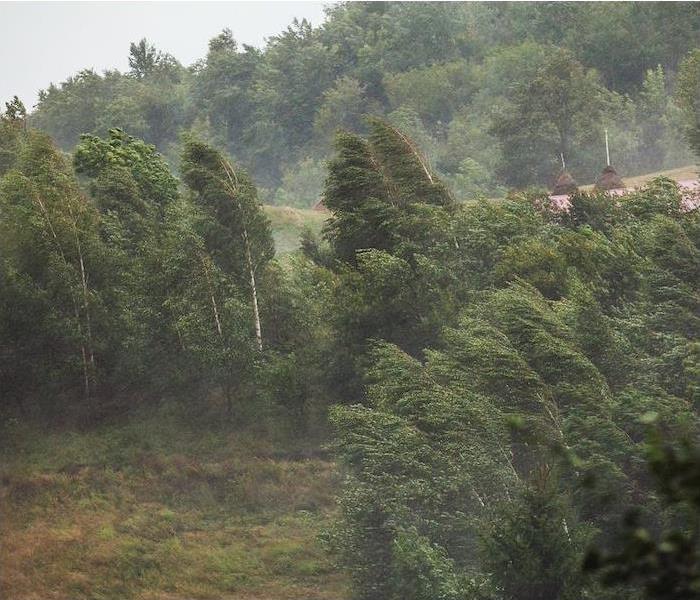 If you've suffered from storm-related damage to your home or business, make SERVPRO of Reno Southwest your first call.
If you've suffered from storm-related damage to your home or business, make SERVPRO of Reno Southwest your first call.
We all know and respect the wind here in Reno. As air accelerates down the mountains, it can pick up speed and race across the landscape as it blows through town. Windy days are a common experience here for us, and that’s not even considering severe weather!
Severe weather situations can cause wind speeds to really pick up, and that can cause widespread damage to your home and property. Even days that are windy when there isn’t a cloud in the sky can become dangerous in the right conditions.
By understanding the different types of wind and how they can affect your property, you are better able to prepare ahead of time and protect your family and home.
Different Wind Patterns in RenoWe all know that thunderstorms can cause damage, and most of the damage is actually due to high wind speeds. When tornadoes are in the area, the likelihood of wind damage is even greater.
Thunderstorms can bring heavy rain, hail and lots of lightning and thunder. They can also cause the wind to blow up to 60 miles an hour. That’s fast enough to pick up yard debris and toss it around your yard.
Straight-line winds accompany stronger thunderstorms and can blow up to 100 miles per hour. These strong bursts of wind have no rotation to them, so they can whip across the landscape and cause widespread devastation.
If a tornado is in the area, you need to be taking cover right away. Wind from tornadoes can occur as downdrafts, micro- or macro-bursts, or wide-reaching straight-line winds, and it can cause total devastation to homes and entire neighborhoods.
Staying Safe When the Wind Picks UpWind can cause a wide variety of damage, including downed trees, mangled playground equipment and damaged power lines. It can even tip over mobile homes and cars if it reaches 80 miles per hour or more.
Staying safe during a wind advisory or warning starts with being informed of the coming threat and then taking action against it. If you have time, go outside and tie down any objects that could be tossed around. Garbage cans, lawn furniture and propane tanks should be anchored down or moved indoors if possible.
Pull broken branches or limbs away from your home, and tidy up your yard. Even one medium-sized branch can break through glass if it is thrown at the right speed.
Once that is done, go inside! Get your family down to the lowest and most interior room in your home and stay there until the storm is gone. Once the coast is clear, you should head outside and do a walkthrough of your property.
Any damage that you discover to your home or roof needs to be addressed right away to prevent further damage from occurring during the next storm or rainfall. Call SERVPRO of Reno Southwest for a quick and efficient restoration.
Has your home been damaged by wind? Call us and get things cleaned up fast.
Extreme Weather Dangers in the U.S. | SERVPRO® of Reno Southwest
3/7/2022 (Permalink)
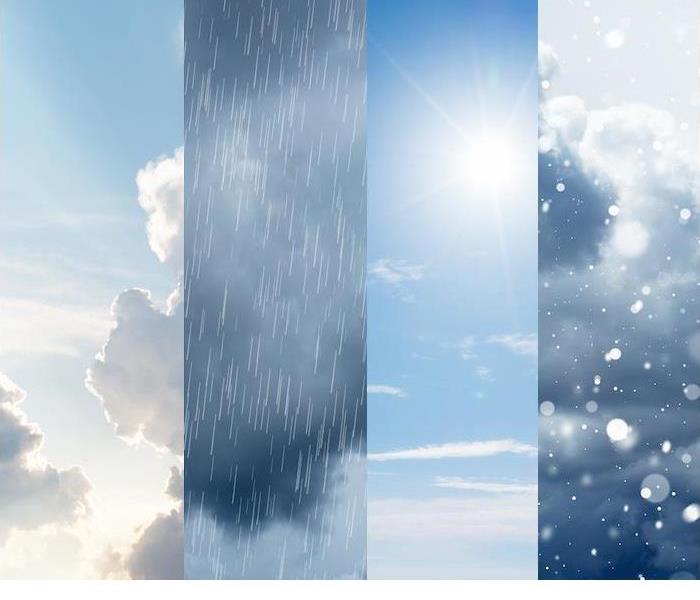 Extreme temperature changes can lead to the possibility of severe weather. SERVPRO of Reno Southwest is a click away if you experience any damage.
Extreme temperature changes can lead to the possibility of severe weather. SERVPRO of Reno Southwest is a click away if you experience any damage.
The United States is one of the largest countries in the world. That being said, seasonal weather is quite diverse over such a broad area—different parts of the country experience varied weather patterns, and hence variable degrees of weather threats.
As spring arrives and warm and cold air masses collide throughout the nation, let’s take a look at the many weather patterns that can be expected throughout the country, and also what we can expect here in Nevada.
The Pacific Northwest is prone to significant rain in the spring, which may result in flooding and water damage. Snow will continue to accumulate at higher elevations, and the melting and runoff from it will create problems of its own.
Winter’s chill lasts the longest in the Upper Midwest and Northeast, and cold weather will persist there for the entirety of the season. Residents from Maine to the Dakotas may anticipate very cold weather and the threat of snow and frigid weather through late spring.
The Southwest, including here in Nevada, will have to be on the lookout for excessive heat waves that can endanger lives and safety. Extremely high temperatures are even expected to rise significantly in the already very hot southern deserts–notably the Las Vegas metro region, which is home to 70% of the state’s population. The South Pacific, including Hawaii, will be on the lookout for possible tsunamis caused by tectonic activity.
Windstorms, derechos and the possibility of wildfires, which spread rapidly when winds are high and the seasons are dry, will be a concern for the central United States, from Iowa to Texas. A portion of this area is Tornado Alley, which has a high tornado frequency.
Finally, the Southeast may see a range of severe weather, from tornadoes and strong thunderstorms in landlocked regions to dangerous rip currents and early-season hurricanes later in the spring.
Extreme weather is a real danger across the United States, regardless of your location. While yours may vary from that of a friend a few states away, it’s always wise to be prepared.
If extreme weather leaves you with damage from water, fire or other elements, help is a click away. Contact SERVPRO for fast, expert recovery.
Prepping Your Home for Winter Weather | SERVPRO® of Reno Southwest
11/24/2021 (Permalink)
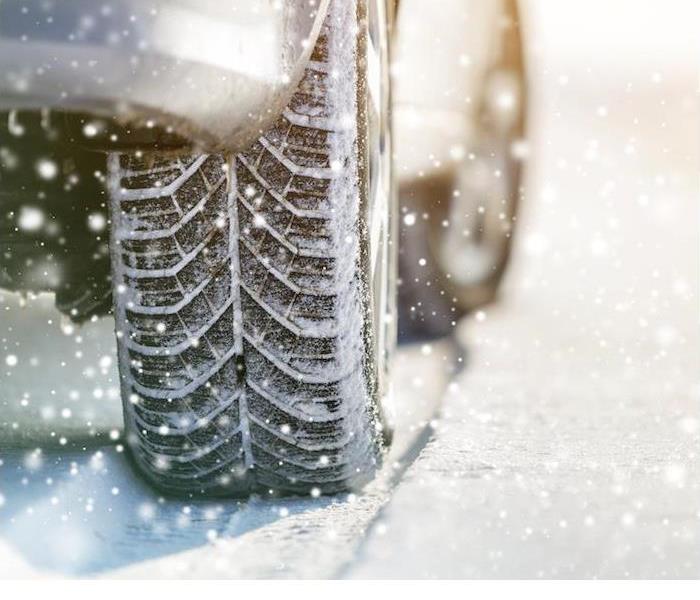 If winter weather should bring damage to your home or business, contact SERVPRO of Reno Southwest for fast, restorative solutions.
If winter weather should bring damage to your home or business, contact SERVPRO of Reno Southwest for fast, restorative solutions.
Baby, it’s cold outside! That’s what some are singing—and rightfully so. The winter season is sneaking up on us, and even though life can be hectic, we can’t forget about safety.
Every season brings its own hazards, and winter is no different. That’s why we want to ensure that we have brought some things to the front of your mind so you can help keep your family and home safe.
Take a look at a few tips about how you can help keep your place safe.
<h3your-family">Protect Your Family
Communicating is something we all do everyday, but do we communicate about safety? You must review an emergency action plan with your family regularly. By doing this, you can help reduce the fear that will set in if something disastrous does happen.
Another thing to do is ensure your vehicle is ready for the winter weather. You can do this by inspecting your vehicle and making sure that it is in good working condition.
Hopefully you already have an emergency safety kit in your car, but now is the time to update it. Be sure to include things like an ice scraper, batteries for flashlights, warm clothing, a blanket and an NOAA radio.
<h3your-home">Protect Your Home
You’re one of the lucky ones if you haven’t had to deal with frozen pipes. This is the biggest threat to homeowners during the winter season. It can cause costly damage to your home and even create more problems in the future.
Heat sources can be a true lifesaver! But before you use any of them, you must be certain that they are in good condition. Be sure to inspect everything from the vents to the electrical wires. If you use a fireplace, ensure it has been cleaned out and is well-ventilated.
<h3your-pets">Protect Your Pets
Pets need our help to take care of them. They shouldn’t be left outdoors during cold weather—bring them in so that they can share in the warmth.
Certainly we know that not all animals can come indoors, so it’s even more important that you are prepping them a safe shelter. It’s also important to make sure they have plenty of food and water that is thawed.
<h3for-melts-and-flooding">Watch for Melts and Flooding
We think of snow and ice as solid, but once the temperature starts to warm up, melting ice and snow can cause dangerous floods.. It’s important that you stay aware of potential flooding and listen to local authorities so that you know what to expect and you can stay prepared.
If winter weather should bring damage or flooding to your home or business, contact SERVPRO for fast, restorative solutions.
Summer Weather Safety Precautions | SERVPRO® of Reno Southwest
8/18/2021 (Permalink)
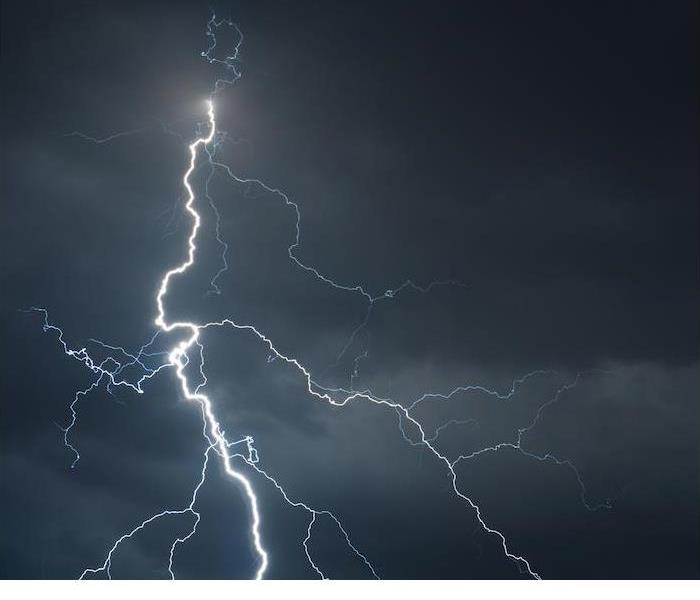 If storms cause damage to your home or business, SERVPRO of Reno Southwest is on the line, ready to make things right.
If storms cause damage to your home or business, SERVPRO of Reno Southwest is on the line, ready to make things right.
Summertime makes us think of hot and sunny days, but we may also need to consider gloomy days, too.
Along with the sun and heat, summer can also bring more thunderstorms than any other time of the year. In most parts of the country, there are atmospheric conditions during summer that create moisture and warm air, which helps create thunderstorms.
Most places in the United States sees a large increase of summer storms during the summer months, and in Reno, it’s no different. We see a major decrease of precipitation during these months.
Staying Aware
Thunderstorms do happen often, but even though they’re common, they should never be taken for granted. You should always pay attention to storm alerts and make other arrangements if you have outdoor events planned.
You may want to invest in a NOAA Weather radio so that you can receive weather alerts even when the power is out.
Flooding is always possible, so if it’s heavily raining, you should plan to stay home and off the roads. Extreme storms can cause major issues like flooding and high winds, which can cause damage to your vehicles or home.
Dozens of people die every year because of storm-related accidents. This is why you can’t take Mother Nature for granted.
Staying Safe
Staying indoors during thunderstorms is important, especially if lightning is present. Make sure you stay indoors until you haven’t heard thunder for at least a half hour.
While indoors, make sure you’re taking extra precautions and staying away from windows. You can also make the kids happy by letting them skip baths or showers for that evening, since both are not recommended during storms.
In case of severe weather, be sure you have an emergency kit prepared, and know the evacuation route for your area.
Flash flooding can occur, well, in a flash! It’s best to stay off the roads during a storm—and never drive through water. Even a few inches of water can carry a car away during a storm.
There are any number of dangers that can come into play in a thunderstorm, and it’s always best to be cautious and put things on hold until storms safely pass. If storms cause damage to your home or business, SERVPRO is on the line, ready to make things right again.
Increase Your Severe Weather Preparations Before Storms Strike | SERVPRO® of Reno Southwest
5/21/2020 (Permalink)
Thunderstorms are quite a common occurrence during periods of warmer weather, but it is not possible to know exactly how much devastation they can cause. Because their ability to cause damage is quite high, it is best to assume that every storm has the ability to cause damage and prepare your household accordingly—this way you will know exactly what to do when severe weather strikes.
Knowing the meaning behind weather alerts, stocking your disaster supplies and having reliable access to weather updates will go a long way in keeping you and your family safe during storms.
Know the Meaning Behind Weather Alerts
Understanding the meaning that weather alerts carry is a useful skill so you know exactly how to respond when they are issued by local weather officials. When a thunderstorm watch is announced, storms are a possibility and everyone in the area should stay alert for updates. When a thunderstorm warning is issued, that means there is an active storm in the area and everyone should seek shelter right away.
Stock Your Disaster Supplies
A well-stocked disaster supply kit will make sure that you can wait out the storm and stay comfortable while you do so. Electricity will often be knocked out during storms, so having fresh water, non-perishable foods and battery-operated flashlights are all helpful tools to keep you comfortable. A first-aid kit is also a smart thing to pack in case someone is injured. You should keep your disaster supplies in a well-protected area of your house, such as a basement or hallway, so you and your household can stay in a protected area for the duration of the storm.
Have Reliable Access to Weather Updates
Though our cell phones have revolutionized the way we receive news and important updates about the world, they are not as useful in the event of severe weather. Because cell reception can be faulty during severe weather and electrical outages can render phones without a full charge useless, it is best to have another way to access weather updates. A NOAA Weather Radio is a smart solution for this that you can keep in your disaster kit at all times.
If your home has been impacted by storm damage, we are here for you. You can contact us 24⁄7 to get a quick response to your home’s damages.
The Various Types of Water Damage Common After Heavy Rain | SERVPRO® of Reno Southwest
5/11/2020 (Permalink)
There are many things that can lead to a house sustaining water damage, and many of them happen slowly over a period of time instead of being sudden. We see many reports after general heavy rain comes through the area, as it has a way of finding areas where a home may be vulnerable.
Being aware of this as a possibility and understanding where it is likely to happen is the best way to reduce the likelihood of severe water damage happening to you.
How Water Damage Might Be a Possibility After Heavy Rain
Backup of clogged gutters. Clearing out your gutters regularly is more than just a home maintenance chore—it is an extremely effective way to reduce your chances of water damage. By clearing debris out, you are ensuring that water does not pool up in your gutters and begin to cause damage to your home.
Leaks around windows and doors. Windows and doors generally have protective seals around them, but as these seals become weather-worn, they can begin to allow more of the elements into the home. In the aftermath of heavy rain, this can result in soggy, warped wood that has become soaked over time.
Poor drainage around the foundation. Even foundations made out of cinder blocks or bricks can be vulnerable to water damage if the landscaping of your lawn allows water to pool up around the edges and seep into the building materials.
Leaks in and around the roof. Any roof can develop leaks, even those that have recently been constructed. While it can sometimes be difficult to catch a leak before it bleeds through to the ceiling, looking for signs of wear and tear can often indicate that something is amiss.
Malfunctioning of a sump pump system. To lower their risk of water damage (and save on their insurance), many homeowners choose to install a sump pump—but maintaining it is just as important as doing the initial install in order to reduce the chances of it breaking.
Leaks around chimneys and skylights. Any time something intersects with your roof, there is an increased chance of water damage issues developing. Seals around chimneys and skylights can begin to wear down over time and begin to allow water to work its way in.
If you’ve experienced water damage to your home, we are here to help. You can call us 24⁄7 to have our trained technicians respond quickly and begin your restoration.
I have storm damage.... What can I expect by calling SERVPRO of Reno Southwest??
2/14/2020 (Permalink)
Storm and wind damage can be a hazard to the structure of a building, by loosening tiles or shingles on the roof. This can lead to moisture caused by rain and snow. This can lead to sagging ceiling and many more issues. Natural elements such as rain, lightning, wind and hail which can result in turning peoples homes and businesses upside down.
When you hire a professional restoration company like SERVPRO of Reno Southwest to assist you with any storm damage suffered to your building or home you can expect the following:
- SERVPRO of Reno Southwest will come to your property and have our trained and knowledgeable technicians will do an inspection of the interior and exterior of your building or home. This will allow them to determine the amount of damage already done and the scope of work that needs to be performed.
- When the scope of work is agreed upon, work will begin. Depending on the extent of damage this will determine the type of equipment the technician will use.
- If storm damage has created a loss or lack of power SERVPRO of Reno Southwest will provide alternative sources of power such as generators.
When a restoration company is called PROMPTLY following storm damage, it allows us the opportunity to RESTORE the building or home much more quickly and efficiently. Time is of the essence in situations with moisture intrusion in order to prevent secondary damage such as mold.
Call us today at 775-852-6480 24/7 – 365 Days a Year!!!!
Spring Storms - Preventative Tips To Avoid Damage
2/14/2020 (Permalink)
Inclement weather can affect you with very little warning. Extreme wind, rain, hail and flooding can create a disaster for you to deal with. There are several ways you can help yourself prevent potential weather related damage.
Sealing your roof, doors, windows
PRIOR to any possible bad weather is the time to check the seals around your windows and doors. You will want to investigate for cracked caulking and loose screws. Make repairs as necessary.
Install A Back flow Valve in Basements
Heavy rain can cause municipal sewers systems to become overtaxed which can create the possibility for excess water to flow backward through your buildings sewer lines. Bathrooms in the lowest points of your home or building may be prone to sewer back-ups. It is important to consider installing a sewer back flow valve to divert unexpected water away from your own sewer lines and back to the city’s sewage system.
Clean Out Gutters & Downspouts
Clogged drains, downspouts and gutters can create damage to the roof. Debris can cause water to unable to flow away from the roof line. Added weight can potentially cause the roof to collapse. Before spring storms start, make sure to fully inspect and repair any issues you find.
Cracks in the Foundation
Small cracks in your foundation or basement can put your building or home at major risk for severe damage during a storm event. When water seeps through your building or home you are in danger of flooding. High Winds can make existing cracks to widen which can cause structural damage. Doing an inspection PRIOR to a storm allows you the opportunity to properly repair the damage(s) to avoid disaster.
When storm damage happens, it can be a terrible experience for the building or homeowner but SERVPRO of Reno Southwest is here to help it “Like it never even happened.” Call us Today for a free inspection! 775-852-6480 – 24/7 – 365 Days a Year!!!!
Surviving A Winter Storm Trapped Outside
2/3/2020 (Permalink)
1. STAY INSIDE YOUR CAR OR TENT DURING A WINTER STORM
In the event that you are out in the world when a severe winter storm hits in is imperative that you STAY where you are, either in your vehicle or tent. Going out in a winter storm either by foot or in your vehicle is NOT recommended.
2. KEEP WARM AND DRY
Keep tent flaps closed . Doors and Windows to vehicles need to be shut tightly. DO NOT OPEN EITHER UNTIL THE STORM HAS STOPPED COMPLETELY. If you have coats, blankets or anything that will help keep you warm… USE IT! In order to avoid hypothermia or frostbite you will need to stay as dry and warm as possible. If you have another person or animal ( DOG ) with you use body heat as a survival tool.
3. STAY HYDRATED
People tend to only think of hydration being an issue in summer months. This is not the case. During winter months our lungs have to work harder in order to warm up and humidify the cold dry air we are breathing in. This creates a need for extra water consumption. If you are trapped using snow to your benefit in this case is your best bet.
4. DETERMINE WHAT TO DO WHEN THE STORM IS OVER
When the snow has stopped, it is now time to determine what comes next. If you are physically able to dig your way out then DO it. If digging out looks to be impossible or even more hazardous for your safety, stay put and wait for rescue workers. During winter months specifically it is imperative that you ALWAYS have a shovel in your vehicle.
5. SEEK MEDICAL TREATMENT IF NECESSARY
If you or someone in your group is experiencing symptoms of hypothermia, you will need to take off your cold, wet clothes as fast as you can and replace with dry ones. Get to medical treatment at the earliest availability.
How to avoid winter storm damage hazards to your home!
2/3/2020 (Permalink)
According to the National Centers for Environmental Information even individual weather events are capable of causing billions of dollars in damage to not only commercial buildings but your home as well. You need to know the different ways that cold weather can impact your home. The major issues to watch out for are damage to your roof, gutters, as well as damage created by snow melt.
Roof Damage – Wind
When wind blows shingles loose or takes off gutters, the resulting damaged areas can let in moisture from snow melt, rain, ice melt. In order to verify that your roof is in good repair we recommend you contacting a roofing specialist yearly for inspection. If you miss the damage, the resulting water intrusion can create thousands of dollars of damage. Keep tarps handy for a quick temporary fix.
Roof Collapse – Heavy Snow
As little as two feet of packed snow can be enough to cause a roof collapse, according to the Insurance Institute for Business and Home Safety. In places that it is to cold to melt between storms this can create a disaster. After a storm always make arrangements for the snow on the roof to be removed as soon as possible.
Gutter Collapse – Ice
If ice has been allowed to build up in your gutters the weight can yank them off of the home. Even with the absence of snow enough sleet, rain and cold temperatures can cause dangerous amounts of ice to build up in your gutter system. Make sure to keep gutters clean of debris so that rain can run out easily. If icicles form on your gutters, SAFELY knock them off of your gutters and make sure they are out of any walk-ways.
Water Damage – Snow melt
As heavy snows melt your home is at risk for water damage or intrusion issues. Water damage creates a host of other issues such as microbial growth. One foot of snow melts to approximately ONE inch of water. Any roof issues you may have will now become apparent as the snow melts and water comes in your attic, upper floors, walls and insulation. Remove snow on your roof as quickly as it is safe once snow has stopped coming down. If you experience leaks or water damage put tarps and buckets under any drip sites.
Just a few preventative measures can help you avoid any serious winter storm damage to your home. If your home is experiencing water damage from a winter storm call SERVPRO of Reno Southwest at 775-852-6480!!!!! We are always here to make it “Like it never even happened. “
Lightning Damage to Check for After a Strike- SERVPRO of Reno Southwest
1/28/2020 (Permalink)
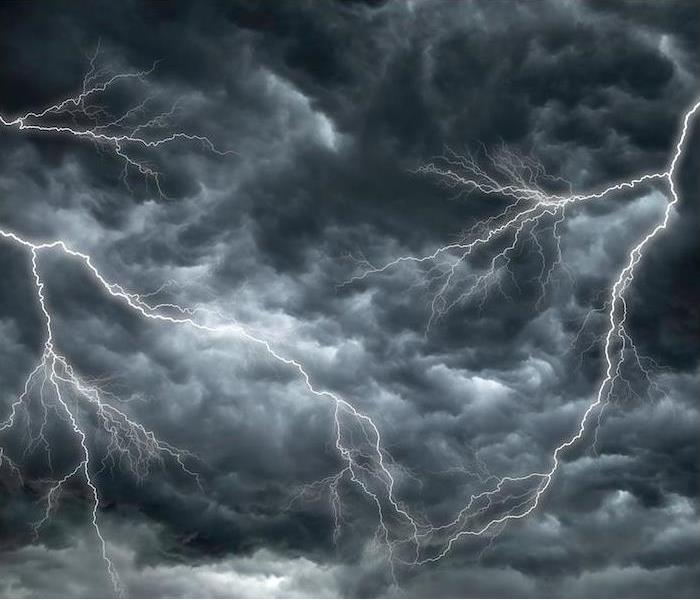 Storm and lightning damage require specialized restoration techniques and equipment. When a storm hits your home, you need the company with experience
Storm and lightning damage require specialized restoration techniques and equipment. When a storm hits your home, you need the company with experience
Lightning bolts are how a storm expels its electrical charge, and they are also a source of some of the most violent thunderstorm damage there is.
Lightning bolts can start fires, ruin electronics and cause severe damage to buildings structures, in addition to posing a severe risk to anyone without shelter. It is important to understand what causes lightning and types of damage it can cause in order to take precautions and stay safe.
How Electricity Becomes Lightning
Thunderstorms all contain an electric charge, which is where thunder and lightning stem from. The bolt of lightning stem from. The bolt of lightning we see is actually discharge of this electrical energy, and the thunder heard is the sound of the shock waves it creates.
Lightning either strikes between clouds or toward the ground, and when striking towards the ground, it will often travel through an object on its way. This is what makes it so dangerous to homes in particular because it travels through electrical wiring with great force.
What to Check for After a Lightning Strike
The background about lightning and the main types of damage it can use to a houseare essential in knowing what to inspect for after a strike.
- Wiring damage. With temperatures up to 500,000 degrees, it is not uncommon for lightning to catch a building on fire as soon as it strikes. Even if it is not immediate, the damage that it can do to wiring can lead to electrical fires starting spontaneously later on. The local fire officials or an electrician can typically preform tests to assess your risk after a strike.
- Ruined electronics. As lightning darts through the electrical system of a home, it fills the wires with an overloaded charge that can transfer through outlets and up the cords of electronics. This can be prevented by unplugging things before a storm and installing sure protectors on outlets.
- Damage to the structure. The same shock waves that produce thunder can also cause harm when lightning strikes the ground. They are powerful enough to crack foundations and shatter glass, so it is wise to do a home inspection after a storm if lighting has struck nearby.
If your home has been affected by storm damages or lightning- related fires, give us a call today! We are experts in damage cleanup and can restore your damage quickly 24/7
What do I do to prepare for an EXTREME Storm Event?
1/24/2020 (Permalink)
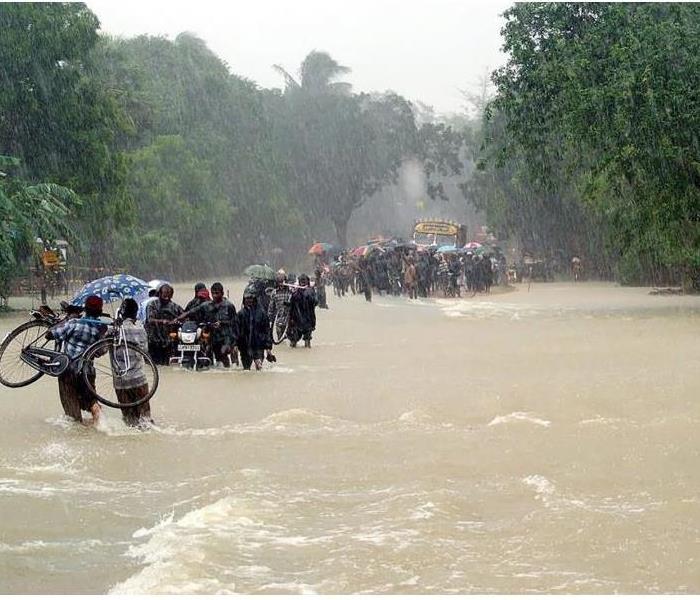
- Prepare your home:
- Make sure your home is well insulated and that you have weather stripping around your doors and window sills to keep the warm air inside.
- Make sure you have a working carbon monoxide detector.
- Keep fire extinguishers on hand, and make sure everyone in your house knows how to use them. House fires pose an additional risk, as more people turn to alternate heating sources without taking the necessary safety precautions.
- Learn how to shut off water valves (in case a pipe bursts).
- Insulate your home by installing storm windows or covering windows with plastic from the inside to keep cold air out.
- Hire a contractor to check the structural ability of the roof to sustain unusually heavy weight from the accumulation of snow - or water, if drains on flat roofs do not work.
- If you have a wood burning fireplace, consider storing wood to keep you warm if winter weather knocks out your heat. Also, make sure you have your chimney cleaned and inspected every year.
- Have at least one of the following heat sources in case the power goes out:
- Extra blankets, sleeping bags and warm winter coats
- Fireplace or wood-burning stove with plenty of dry firewood, or a gas log fireplace
- Prepare your vehicle:
- Fully winterize your vehicle: Have a mechanic check antifreeze, brakes, heater and defroster, tires, and windshield wipers to ensure they are in good shape. Keep your gas tank at least half full.
- Keep an extra emergency kit specifically created for your car. In addition to the basic essentials, consider adding a portable cell phone charger, ice scraper, extra blanket, sand for traction and jumper cables.
- Rock salt or more environmentally safe products to melt ice on walkways. Visit the Environmental Protection Agency for a complete list of recommended products.
- Sand to improve traction.
- Make sure you have a cell phone with an emergency charging option (car, solar, hand crank, etc.) in case of a power failure.
- People who depend on electricity to operate medical equipment should have alternate arrangements in place in case power is out for an extended period of time.
- Plan to check on elderly/disabled relatives and neighbors.
- Plan to bring pets inside.
- Know where the manual release lever of your electric garage door opener is located and how to operate it in case you lose power.
- Fill a gallon container with water and place them in the freezer to help keep food cold.
- A NOAA Weather Radio broadcasts alerts and warnings directly from the NWS for all hazards. You may also sign up in advance to receive notifications from your local emergency services.
Topaz Lake
5/22/2018 (Permalink)
Here is a story about flooding that occurred at Topaz Lake.
http://www.kolotv.com/content/news/Mudslide-blocks-US-395-at-Topaz-Lodge-483277591.html
A portion of U.S. 395 near the Topaz Lodge is closed following multiple mudslides. U.S. 395 is closed in both direction from SR 208 to the Nevada/California state line. The closed area is at mile marker 1 in Douglas County.
The incident happened around 6:38 p.m. Monday, May 21, 2018. Douglas County officials say approximately 20 occupied vehicles were impacted on the roadways.The Topaz Lodge was occupied with about 200 people who sheltered in place during the event. No one was hurt in the mudslides.
Officials say last year's Slinkered Fire in Douglas County contributed to the debris flow.
The Nevada Department of Transportation has sent a plow and a loader truck to remove mud from the road. Emergency personnel are doing further assessment to homes and county infrastructure below the lodge and along Topaz Park Road.
Northbound traffic is stopped on the California side. Southbound drivers are being diverted onto SR-208 through Wellington. There is no estimated time the road will be cleared.
The Douglas County Sheriff’s Office, Douglas County SAR and the Douglas County Public Works Road Department responded to the incident. Cal Trans, Mono County EMS, California Highway Patrol, and Antelope Valley Fire assisted from the California side.
Truckee River Flood
4/5/2018 (Permalink)
Please be prepared this weekend. Here is the info about the flooding for the weekend.
http://www.kolotv.com/weather/alerts
Flood Warning
Areas Affected: Washoe
NWS Reno (Western Nevada)...The National Weather Service in Reno has issued a Flood Warning for the following rivers in Nevada... Truckee River At Reno affecting Washoe County Truckee River At Vista affecting Storey and Washoe Counties For the Truckee River...Minor flooding is forecast for Reno and Minor to moderate flooding is forecast for Vista. A strong atmospheric river will impact the Truckee River Basin Friday evening and Saturday...with heavy rain in the eastern Sierra and western Nevada. Snow levels are expected to rise to over 10,000 feet during the period of heaviest precipitation. These river forecasts are based on forecast rainfall and temperature conditions at time of issuance. If actual conditions vary from these forecasts...river conditions will vary accordingly. River forecasts include current and planned reservoir releases. The National Weather Service in Reno has issued a
* Flood Warning for The Truckee River At Reno.
* from Saturday morning to Saturday afternoon...Or until the warning is cancelled.
* At 2:15 PM Wednesday the stage was 8.2 feet.
* Flood stage is 11.0 feet.
* Minor flooding is forecast.
* Forecast...Rise above flood stage to near 11.1 feet by early Saturday afternoon. The river will then fall back below flood stage Saturday afternoon.
* Impact...At 11.0 feet...Flood Stage...The river will be running near bankfull with minor impacts to parks, trails and low lying areas along the river from Mogul to Highway 395. Flows are expected to crest Saturday afternoon at levels similar to February 10, 2017 and significantly below January 9, 2017. &&
Excessive rainfall may also generate rock and mud slides in steep terrain. Persons living near rivers, creeks, and streams in far western Nevada should monitor the latest weather information at weather.gov/reno and be prepared to take action. PREPARE NOW by clearing drainages and ditches of debris and move items near the river to higher ground. The next forecast update for this location will be issued Thursday.
Douglas County Flooding
4/5/2018 (Permalink)
This is for our neighbors to the south of Reno. Please be prepared.
http://www.kolotv.com/weather/alerts
Flood Warning
Areas Affected: Douglas
NWS Reno (Western Nevada)The National Weather Service in Reno has issued a
* Flood Warning for... Douglas County along the East and West Forks of the Carson River including the main stem of the Carson River from the confluence to the Cradlebaugh Bridge on Highway 395 in western Nevada...
* Until 1100 AM PDT Sunday
* Excessive rainfall and snowmelt is forecast for the warned area starting Friday and continuing into Saturday. The biggest impacts are expected to occur Saturday morning through Sunday morning on the rivers and starting as early as Friday afternoon on smaller creeks. The wave of water is currently expected to move downstream of the warned area by Sunday morning.
* Minor to moderate flooding is expected. Rivers, creeks, streams, urban areas along the river, farmland and pastures, roads, and the low lying area in the Carson Valley are at the greatest risk for flooding. High flows may also impact Cradlebaugh Bridge along Highway 395.
* Over 2 inches of rain is expected in the upper reaches of the basin with snow levels rising above 10000 feet. Expect snowmelt out of the low and mid level snowpack and runoff to significantly contribute to the amount of water moving through the Carson River system.
* This includes the following streams and drainages...Daggett Creek... Carson River from the confluence to Cradlebaugh Bridge...Indian Creek...Bryant Creek...Brockliss Slough... Johnson Slough...East Fork Carson River...West Fork Carson River... Home Slough and Fredericksburg Canyon.
Turn around, don`t drown when encountering flooded roads. Most flood deaths occur in vehicles. Follow the directions of emergency management officials. Stay away from river banks and culverts which can become unstable and unsafe.
Local Flooding
3/22/2018 (Permalink)
Here is the story about our local flooding issues that we are having. Be safe out there.
http://mynews4.com/news/local/washoe-county-residents-urged-to-prepare-for-upcoming-storm
Washoe County is experiencing some localized flooding throughout the county on Thursday, March 22.
"According to the county the following locations have reports of flooding:
- Verdi: Minor flooding (infrastructure only) along Hill Lane
- South Reno/Virginia Foothills: Minor flooding (infrastructure only) along Kivett/Toll Road
- Belli Ranch along the Steamboat Ditch: Crews are monitoring and have reached out to Steamboat Ditch Co.
Residents are asked to be prepared and take precaution to protect their property as heavy rain and localized flooding is expected throughout the week.
"With our recent snows, the ground is saturated which is why we are urging people to be prepared as we could see some localized flooding across roadways and properties in flood prone areas” says Operations Division Director, Eric Crump. “While it is natural for some water to be pushed on to the road with high winds, always use caution and never drive through flooded roadways.”
Possible flooding
3/20/2018 (Permalink)
Here is a story about possible flooding in the Reno area.
http://www.kolotv.com/content/news/With-an-eye-on-the-forecast-the-county-is-prepping-for-potential-flooding-477335663.html
It all depends on the weather, but the other elements are all there. A fair amount of snow from last week's storms. The ground saturated with moisture and a forecast for another round, possibly much warmer.
Add to that all the water still left from last year's winter in closed basins like Lemmon Valley and there's ample reason to be prepared.
"So, we get the rain on snow. We get a lot of moisture coming down into some of those drainage systems," said Eric Crump, the Operations Division Director for Community Services. "It can overwhelm a system pretty easily."
If needed, there are nine sandbag locations throughout the county. They've been there throughout the season. In Lemmon Valley walls now contain Swan Lake and there are pumps stationed to send water back in the lake if needed.
"We have the Hesco walls, the Hesco barriers and if we need to pull the trigger on road closures, like Lemmon Drive or something like that we have the triggers in place and we'll do that. We're not expecting right now that this storm could do that, but if it does, we're ready."
But he says the public can help by clearing culverts and drainage channels where possible, calling the county if needed.
"We have hundreds of miles of drainage systems and culverts throughout the county. We do our best. We know where those flood prone areas are. We try to keep our eye on those, but the public is our best ears and eyes out there.
"So, I would just advise the public, if they see water over the roadway don't travel over the roadways. Be safe, be smart. Travel smart and, if they see anything call us at 328-2180."
Lemmon Valley
3/5/2018 (Permalink)
Here is a link to a story about the Lemmon Valley floods that happened over a year ago.
http://www.rgj.com/story/news/2018/03/05/rgj-investigates-reno-knew-lemmon-valley-would-flood-but-allowed-development-anyway/317123002/
"Last winter yielded record precipitation. Strong early season storms left a significant snowpack on Peavine Mountain. Then, a series of nine atmospheric river rainstorms hammered Lemmon Valley, one after another."
"The rain completely saturated the soil and the water poured into Swan Lake. In closed basins such as Lemmon Valley, Stead and Cold Springs, there is nowhere for the water to go but the lake and no way for the lake to empty but through the slow process of evaporation."
"As the rebounding economy fuels a boom in new construction — much of it slated for the North Valleys, including areas currently underwater, and in other flood zones — city officials are grappling with how much to restrict developers in the closed basins so as not to make the flooding situation worse."
Enjoy the rest of the story on RGJ's website.
Donner Snow Storm
3/1/2018 (Permalink)
Recently we have had a string of snow storms in the area. We have had a late winter this year. Although it is not like the one we had last year but it will do. Let's hope that it continues to snow in the area to help out the ski resorts and all of the hospitality venues in the area. Please drive carefully while you are out on the roads. Let's be mindful of all of the new drivers who are not from the Reno Tahoe area. There are plenty of new residents who are still not used to driving on snowy roads. While we have snow in the area please get out there to enjoy it and have some fun with the family. Remember if you ever need us please don't hesitate to call SERVPRO of Reno Southwest. "Like it never even happened".
Devastating
2/15/2018 (Permalink)
Storm and flood damage can be devastating. Immediate action is needed, and you need the company with storm damage experience. SERVPRO of Reno Southwest has the expertise and the resources to handle any size disaster and can respond immediately to storm and flooding conditions. Storms occur with little warning and can be especially devastating, so you’ll need the company that you can trust to rise to the occasion. Regardless of the type of storm, SERVPRO of Reno Southwest can handle any size disaster. During catastrophic storms and major events, our Disaster Recovery Team can respond quickly with additional resources.
An immediate response helps to minimize the damage and the cleaning and restoration costs.
Water is particularly invasive, quickly spreading throughout your property and being absorbed into floors, walls, furniture, etc. SERVPRO of Reno Southwest arrives quickly and starts the water extraction process almost immediately.
Severe Storms
1/26/2018 (Permalink)
Here is an article of what to do before a severe storm. This is very helpful for the family to be prepared. I know outside it does not seem like much of a winter for our part of the country but we have had instances where we do need the info. Enjoy!
https://www.ready.gov/winter-weather
- Make a Family Communications Plan. Your family may not be together when disaster strikes, so it is important to know how you will contact one another, how you will get back together and what you will do in case of an emergency.
- Make an emergency kit for at least three days of self-sufficiency.
- Keep space heater safety in mind: Use electric space heaters with automatic shut-off switches and non-glowing elements. Remember to keep all heat sources at least three feet away from furniture and drapes.
- Prepare your home:
- Make sure your home is well insulated and that you have weather stripping around your doors and window sills to keep the warm air inside.
- Make sure you have a working carbon monoxide detector.
- Keep fire extinguishers on hand, and make sure everyone in your house knows how to use them. House fires pose an additional risk, as more people turn to alternate heating sources without taking the necessary safety precautions.
- Learn how to shut off water valves (in case a pipe bursts).
- Insulate your home by installing storm windows or covering windows with plastic from the inside to keep cold air out.
- Hire a contractor to check the structural ability of the roof to sustain unusually heavy weight from the accumulation of snow - or water, if drains on flat roofs do not work.
- If you have a wood burning fireplace, consider storing wood to keep you warm if winter weather knocks out your heat. Also, make sure you have your chimney cleaned and inspected every year.
- Have at least one of the following heat sources in case the power goes out:
- Extra blankets, sleeping bags and warm winter coats
- Fireplace or wood-burning stove with plenty of dry firewood, or a gas log fireplace
- Prepare your vehicle:
- Fully winterize your vehicle: Have a mechanic check antifreeze, brakes, heater and defroster, tires, and windshield wipers to ensure they are in good shape. Keep your gas tank at least half full.
- Keep an extra emergency kit specifically created for your car. In addition to the basic essentials, consider adding a portable cell phone charger, ice scraper, extra blanket, sand for traction and jumper cables.
- Rock salt or more environmentally safe products to melt ice on walkways. Visit the Environmental Protection Agency for a complete list of recommended products.
- Sand to improve traction.
- Make sure you have a cell phone with an emergency charging option (car, solar, hand crank, etc.) in case of a power failure.
- People who depend on electricity to operate medical equipment should have alternate arrangements in place in case power is out for an extended period of time.
- Plan to check on elderly/disabled relatives and neighbors.
- Plan to bring pets inside.
- Know where the manual release lever of your electric garage door opener is located and how to operate it in case you lose power.
- Fill a gallon container with water and place them in the freezer to help keep food cold.
- A NOAA Weather Radio broadcasts alerts and warnings directly from the NWS for all hazards. You may also sign up in advance to receive notifications from your local emergency services.
Extreme cold
1/26/2018 (Permalink)
Here is another article that could help someone prepare for what to do during extreme cold and large severe storms. Hope the info helps.
https://www.ready.gov/winter-weather
- Stay indoors during the storm.
- Drive only if it is absolutely necessary. If you must drive: travel in the day; don’t travel alone; keep others informed of your schedule and your route; stay on main roads and avoid back road shortcuts.
- Walk carefully on snowy, icy, walkways.
- Avoid overexertion when shoveling snow. Overexertion can bring on a heart attack—a major cause of death in the winter. Use caution, take breaks, push the snow instead of lifting it when possible, and lift lighter loads.
- Keep dry. Change wet clothing frequently to prevent a loss of body heat. Wet clothing loses all of its insulating value and transmits heat rapidly.
- If you must go outside, wear several layers of loose-fitting, lightweight, warm clothing rather than one layer of heavy clothing. The outer garments should be tightly woven and water repellent.
- Wear mittens, which are warmer than gloves.
- Wear a hat and cover your mouth with a scarf to reduce heat loss.
Mudslides
1/17/2018 (Permalink)
Lately our part of the country has experienced some terrible storms. The west coast was first hit with severe wild fires and now California experienced torrential rain storms. This a story from CNN about the mudslides after the rain storms.
The mudslides came in the early morning hours of last Tuesday, destroying an estimated 65 homes and damaging hundreds of others, the California Department of Fire and Forestry Protection said.
The rain poured down on hillsides charred by recent wildfires, which burned vegetation that otherwise could make the terrain more resistant to mudslides.The Thomas Fire -- the largest wildfire in California's recorded history --burned more than 281,000 acres in Santa Barbara and Ventura counties from early December into this month. It wasn't fully contained until Friday. For days, rescuers searched frantically for the missing after mud and boulders barreled into neighborhoods in and nearMontecito, an affluent seaside community east of Santa Barbara. The mudslides demolished homes and left roads impassable.Now, what had been a search-and-rescue operation authorities is a search-and-recovery undertaking. The crews probably won't be hampered by bad weather most of this week. The first chance of rain will come Thursday night to Friday and it is estimated to amount generally to less than a third of an inch, CNN meteorologists said. Please keep the families of California in your prayers.





 24/7 Emergency Service
24/7 Emergency Service

















